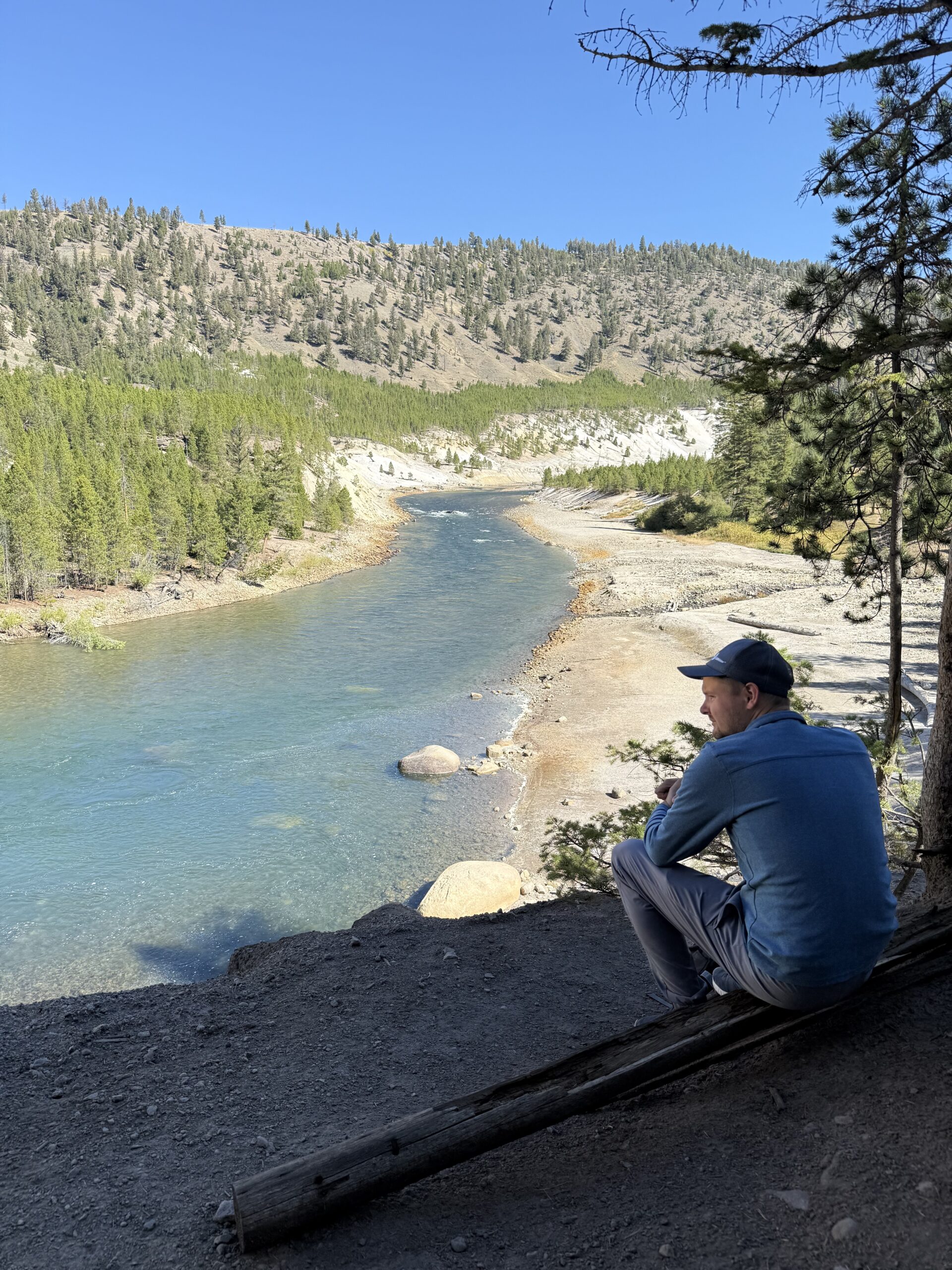This blog post may contain affiliate links, which are at no cost to you. It just helps support me so I can continue to put out free content for you like this! Thank you for your support!
Yellowstone National Park is one of the most iconic and breathtaking natural wonders in the United States, drawing millions of visitors each year with its diverse landscapes, geothermal features, and abundant wildlife. But what if you only have one day in Yellowstone to explore? While it’s impossible to see everything this vast park has to offer in just a day, you can still experience some of its most famous and awe-inspiring sights. In this guide, we’ll help you make the most of your limited time by highlighting the must-see spots, tips for efficient travel within the park, and how to enjoy an unforgettable adventure during your one day in Yellowstone.
WHEN TO VISIT YELLOWSTONE NATIONAL PARK
The timing of your visit to Yellowstone National Park largely depends on your interests. Each season brings its own unique charm, so here is a breakdown of the pros and cons for each. I do want to note that the itinerary listed in this blog can only be executed fully in summer and early fall when all the roads are fully open.
- Winter (December through March): Winter in Yellowstone National Park can be challenging due to road closures from snow. While the parks are peaceful and less crowded, only a small portion of the park remains accessible. However, if you’re into winter sports like snowmobiling or cross-country skiing, this could be the perfect time. Only about 3% of Yellowstone’s annual visitors come in the winter.
- Spring (April through May): Spring can be a beautiful time to visit, as the park slowly awakens from its winter slumber. Fewer crowds and vibrant wildlife make it a great choice, but the weather can be unpredictable, and roads and lodging open gradually depending on conditions. Trails may be muddy due to snowmelt, so come prepared for varying weather.
- Summer (June through August): This is peak season in Yellowstone. Expect warm weather, with high temperatures ranging from the mid-70s to low 80s, and full access to all park facilities. While you’ll have access to everything, be prepared for crowds, especially at famous spots like Old Faithful and Grand Prismatic. However, with over 2 million acres to explore, there’s still plenty of space for more secluded adventures.
- Fall (September through November): Fall is my personal favorite time to visit. As the crowds thin out, the park still offers pleasant weather in September, making it a great time to enjoy hiking and wildlife watching. However, as temperatures drop, snow becomes more likely in October and November, and some facilities begin to close for the season. If you want to enjoy all the amenities, September is your best bet.
Check out these pages for estimated park openings/closings by date:
AIRPORTS NEAR YELLOWSTONE NATIONAL PARK
When flying to the Yellowstone area, several airports serve as a convenient gateway to the park. Here’s a map of four of the most convenient airports to the park with descriptions of each below:
- Bozeman Yellowstone International Airport: About 1.5 hours from the northern entrance of Yellowstone, Bozeman is a great option and offers easy access to both parks.
- Jackson Hole Airport: Located just over an hour from Yellowstone’s south entrance and only 10 minutes from Grand Teton.
- West Yellowstone Airport: This small airport is only 5 minutes from Yellowstone’s west entrance, but offers fewer flight options.
- Idaho Falls Airport: About 2 hours from both the west entrance of Yellowstone and the south entrance of Grand Teton, this airport can also serve as another convenient option for travelers.
For our trip, we flew into Bozeman, Montana, and worked our way south in a loop. Depending on your arrival airport, you can adjust this itinerary to suit your needs.
THE PERFECT ONE DAY YELLOWSTONE ITINERARY
It’s time to dive into America’s very first national park – Yellowstone! If you’re aiming to visit all these highlights in one day (like we did), be prepared for a busy schedule. To get the most out of your day, start early. If you want to take a slower pace, this day’s activities could easily be split into two days as well.
(1) – Bears Brew
For a caffeine fix to start your day, stop by Bears Brew – a quirky coffee stand offering excellent coffee, matcha lattes, and light bites.
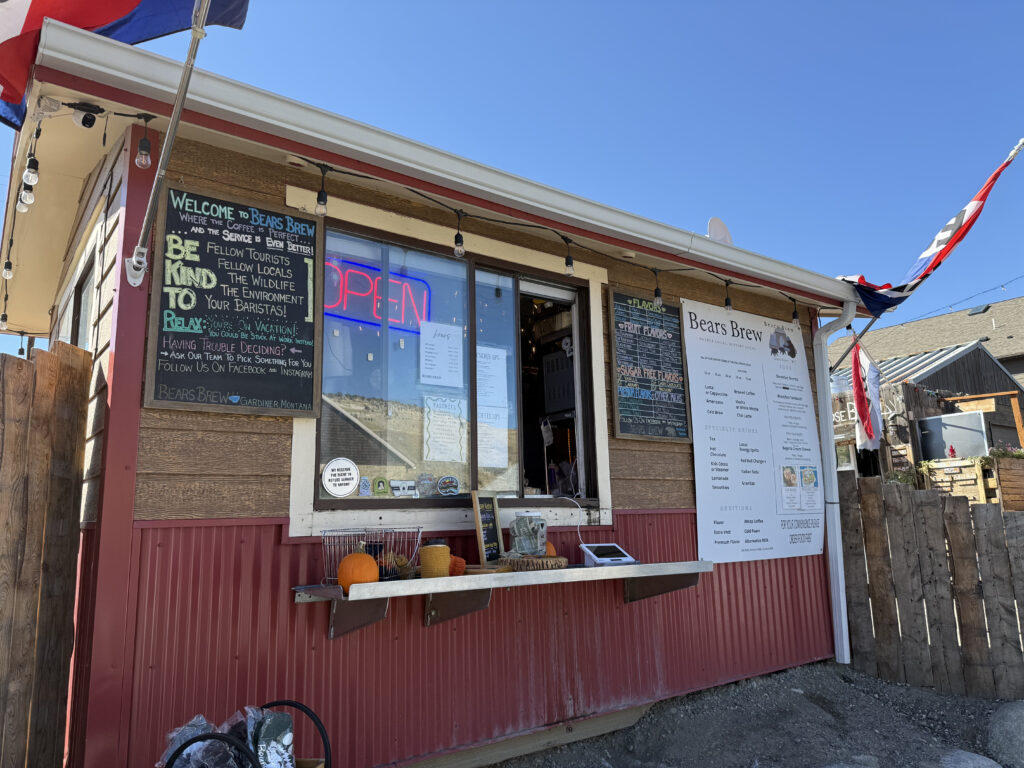

(2) – Enter the park at the North Entrance
Start your day by heading south from Gardiner to the North Entrance, just a short drive from the town. This entrance is iconic, marked by the famous Roosevelt Arch, which was built in 1903 to provide a grand entrance to the park. Take a moment to snap some photos and admire the architecture before you head deeper into the park.

(3) – Mammoth Hot Springs
Your first stop inside the park should be Mammoth Hot Springs, one of Yellowstone’s most striking geothermal features. This area is known for its unique travertine terraces, formed by hot water from the springs. You can walk along the boardwalks that wind around the terraces and get a close-up look at the bubbling hot springs, which vary in color and texture. Take your time here, as you can easily spend 45 minutes to an hour exploring the area. Don’t forget to look for wildlife, as the area is often frequented by elk and bison.
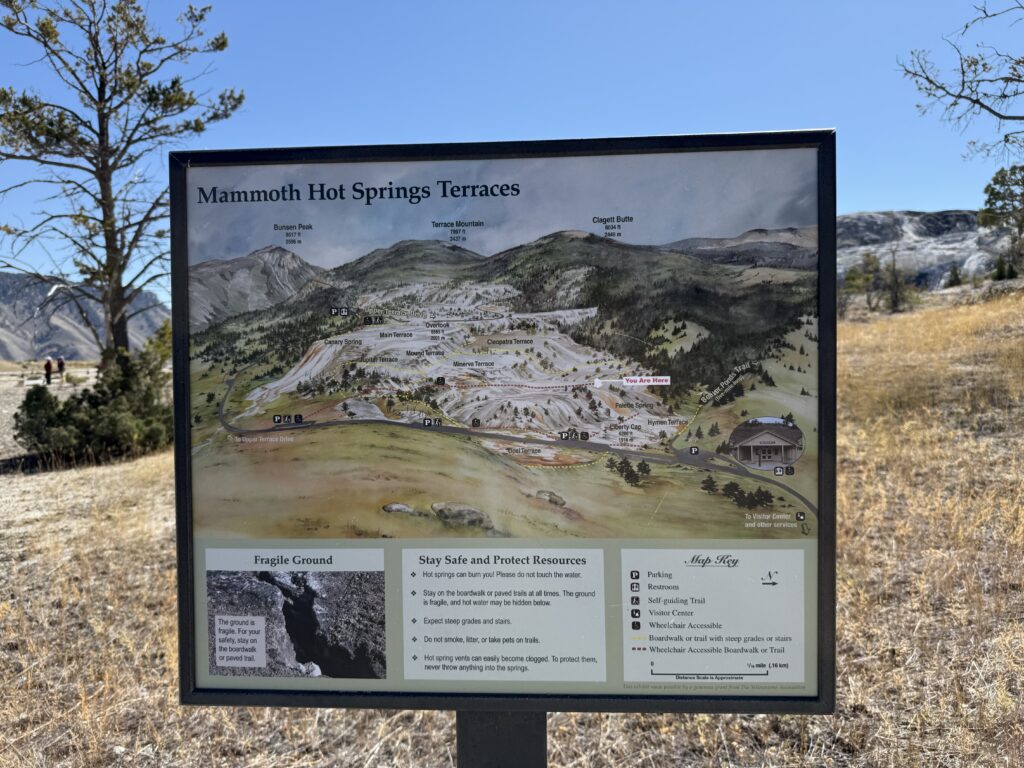
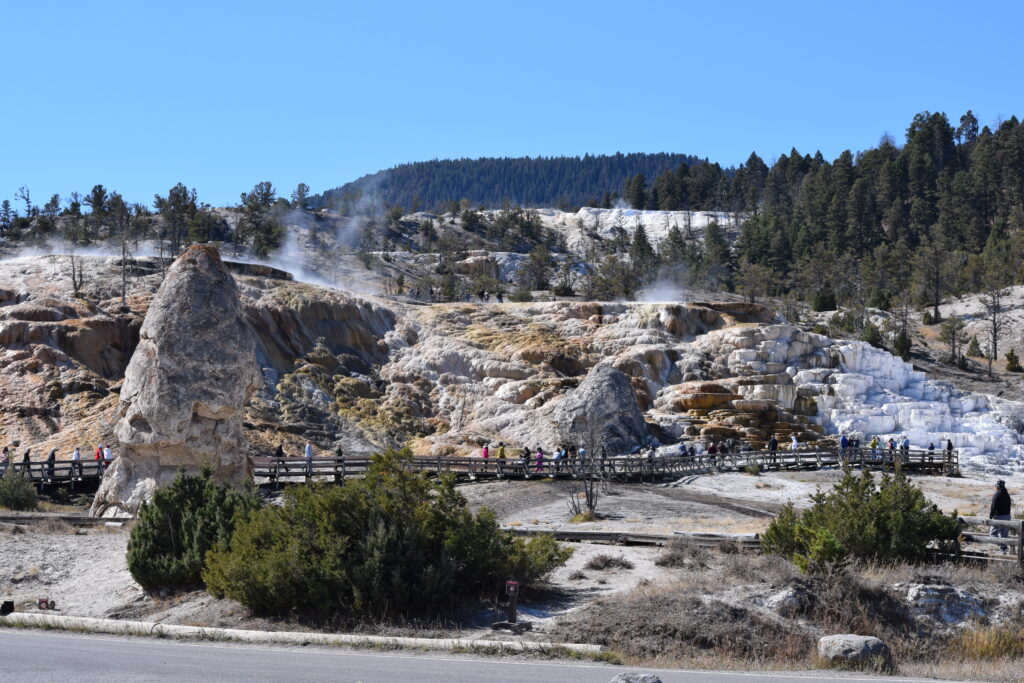
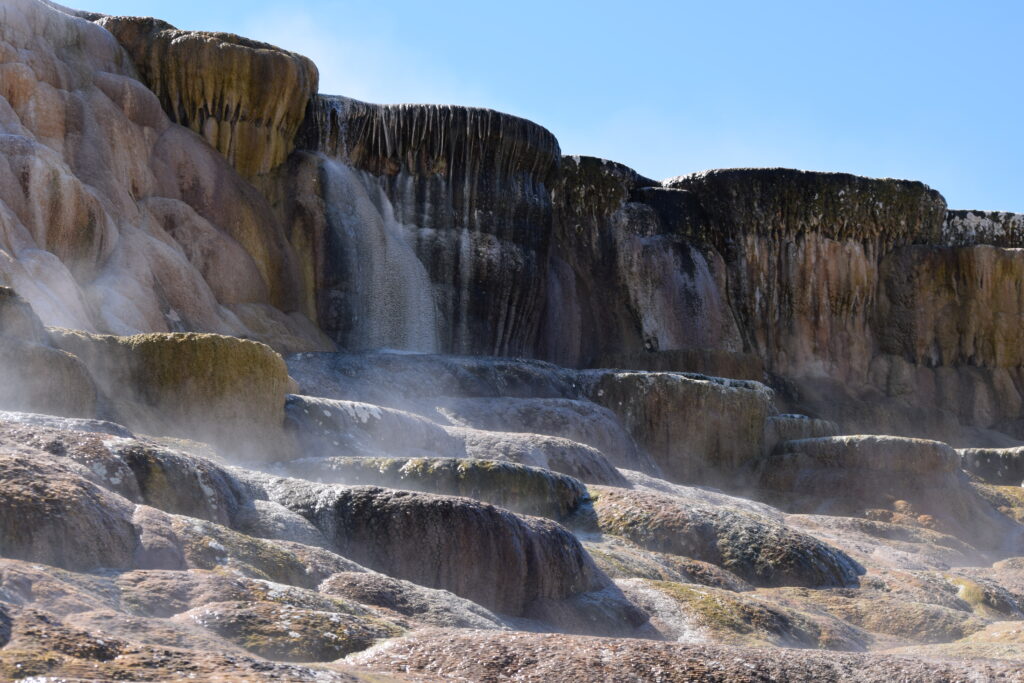
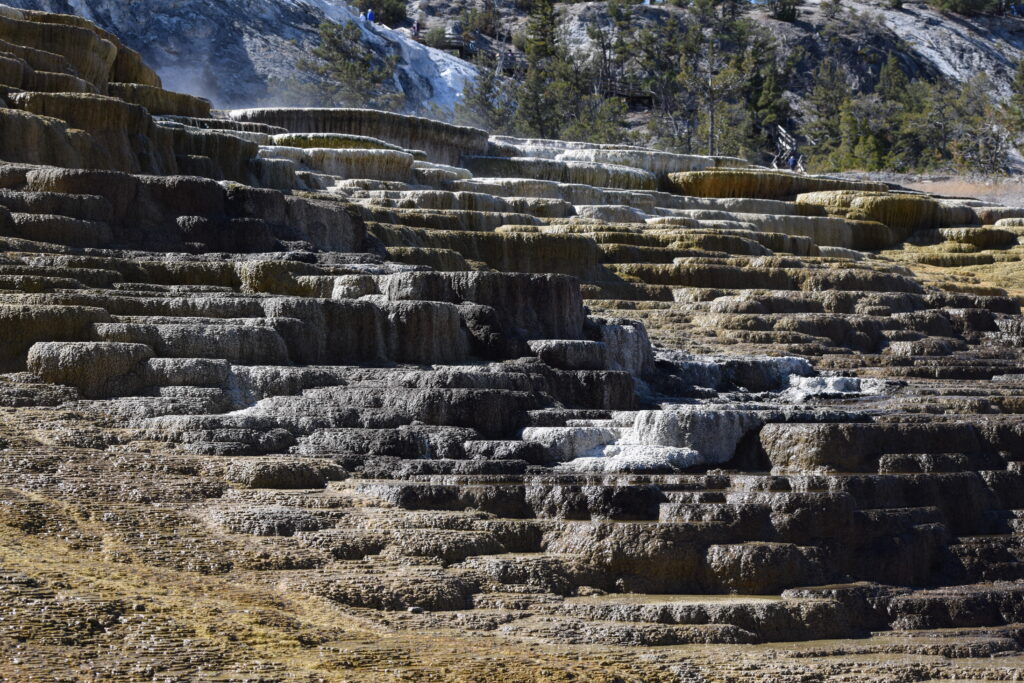

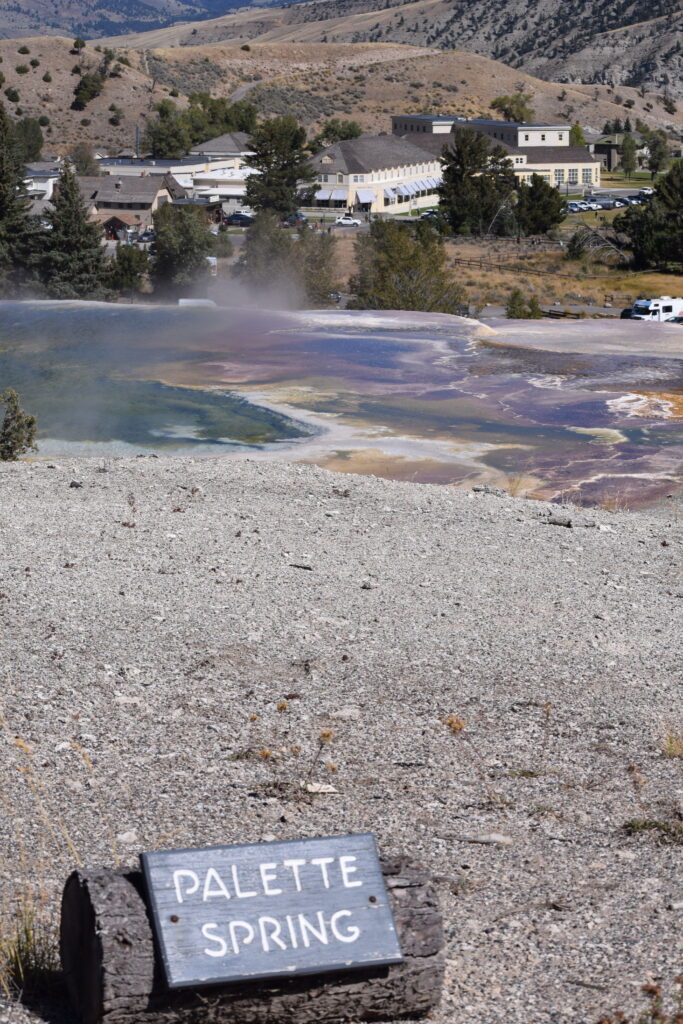

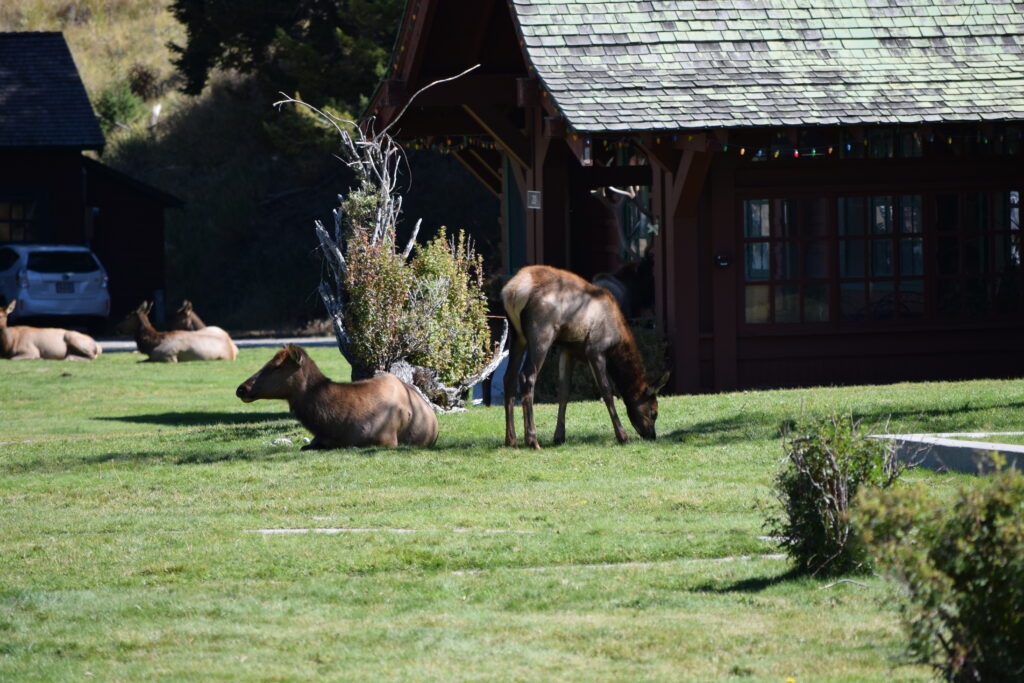
(4) – Calcite Springs
Next, head towards Calcite Springs, a lesser-known gem in the park. This short stop offers a quick but rewarding view of the Yellowstone River as it winds through the canyon. The views from the viewpoint are impressive, and the trail is a short loop less than 1/4 mile long.
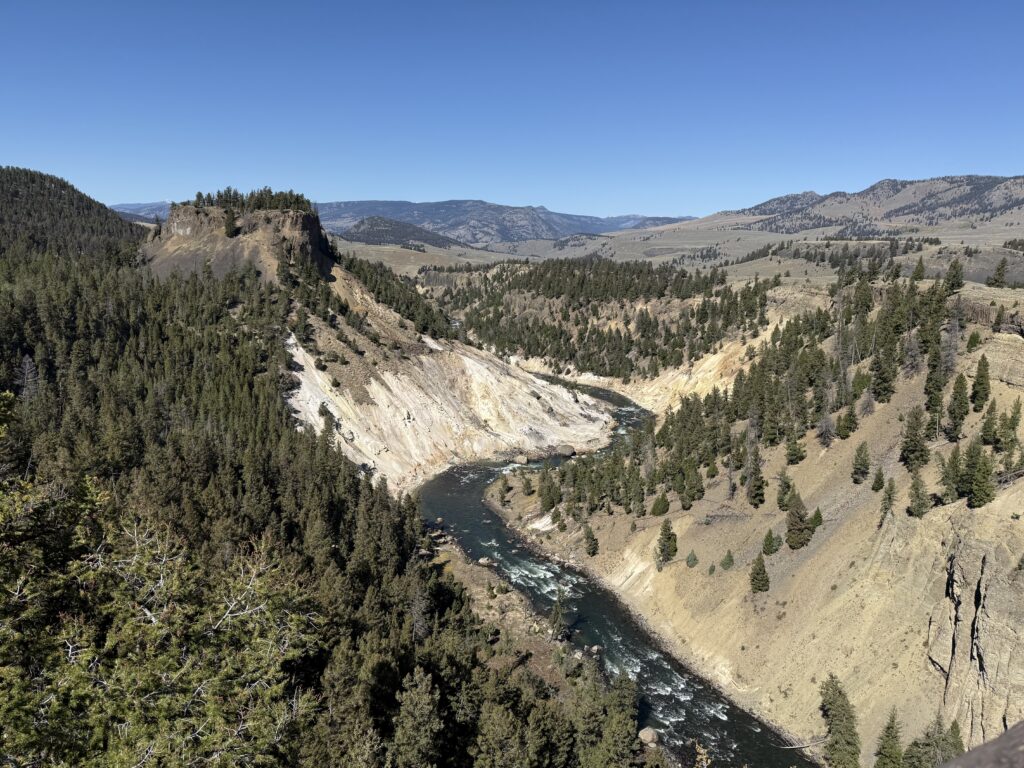

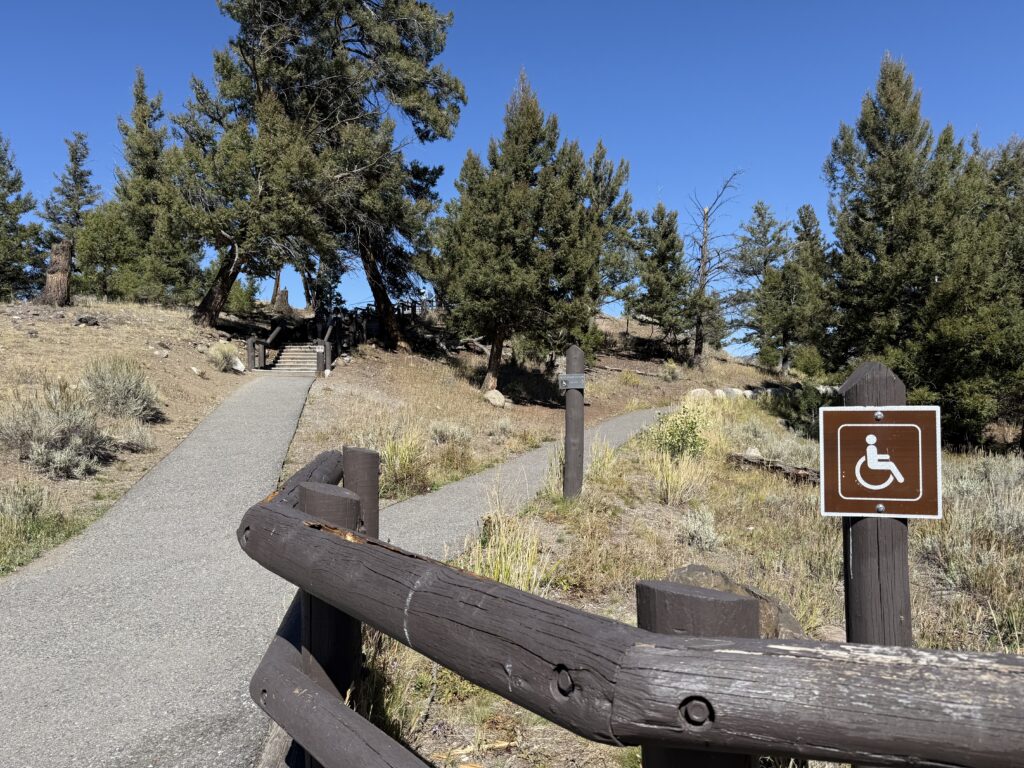
(5) – Tower Fall
A must-see stop in Yellowstone is Tower Fall, a 132-foot waterfall located in the Yellowstone River Canyon. A short, 500-foot walk from the parking area will bring you to the overlook, where you can take in the beauty of the waterfall from above.
If you’re up for a longer hike, the Tower Fall Trail takes you on a moderate 0.7-mile out-and-back hike down to the Yellowstone River. While the official trail doesn’t lead all the way to the river, there are some unofficial paths that take you down to the river. We were really glad we did this hike!
Tower Fall is also a great place to stop and each lunch if you didn’t pack anything. They have some stores with a variety of food options like sandwiches, ice cream, etc.

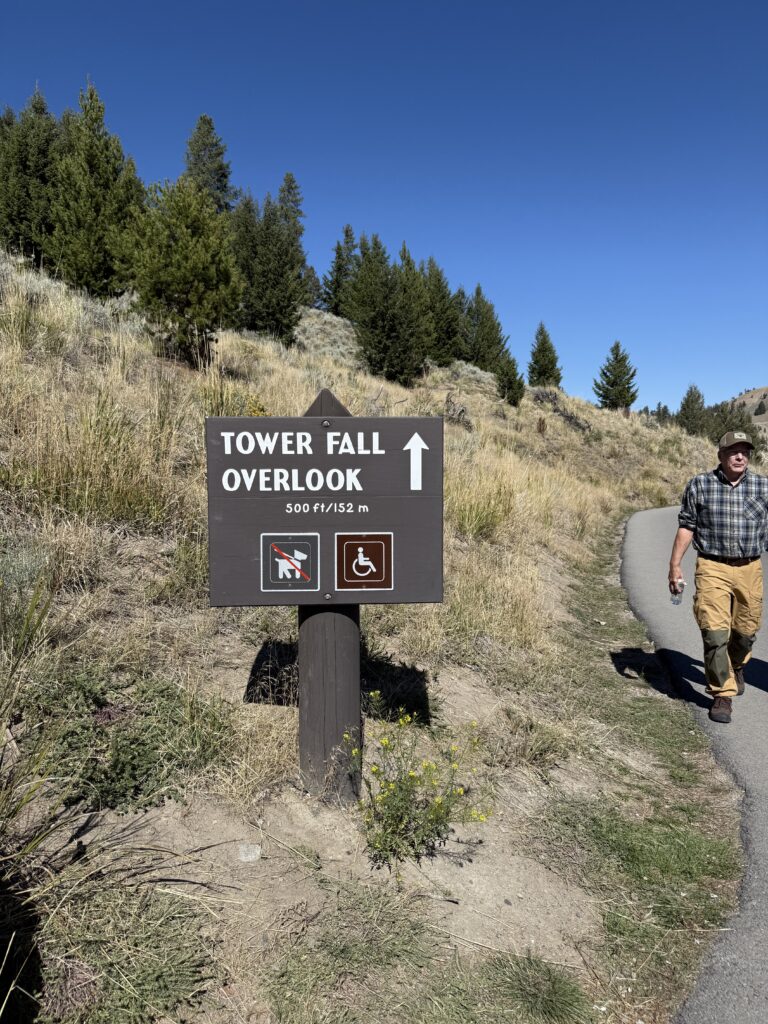
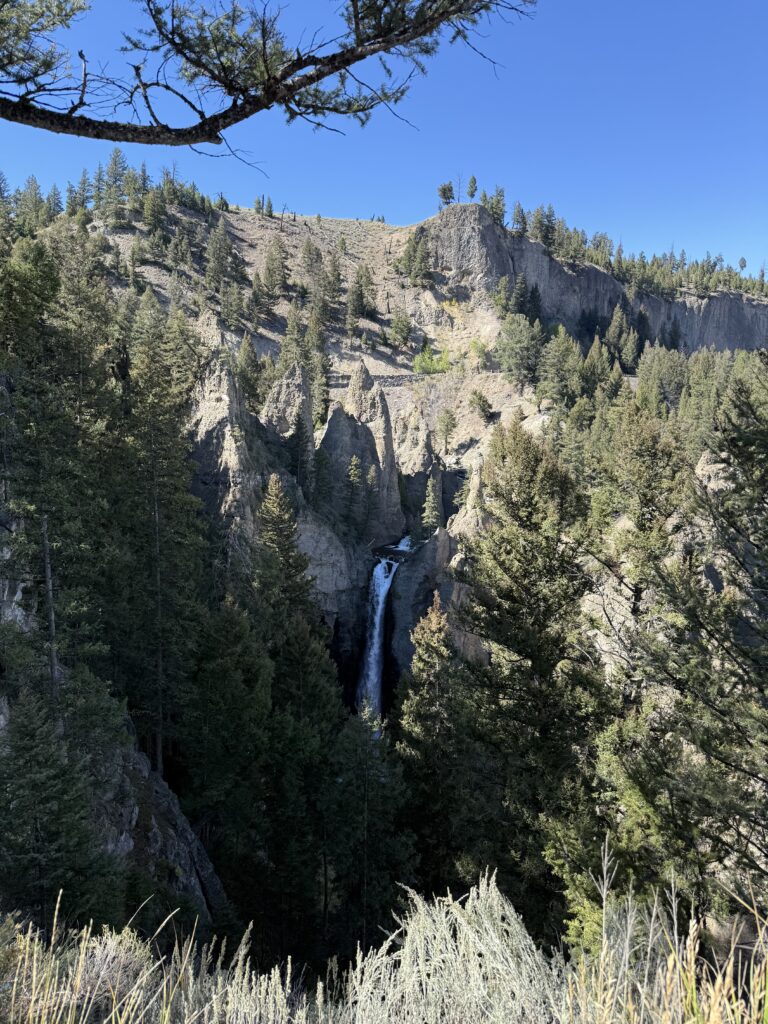
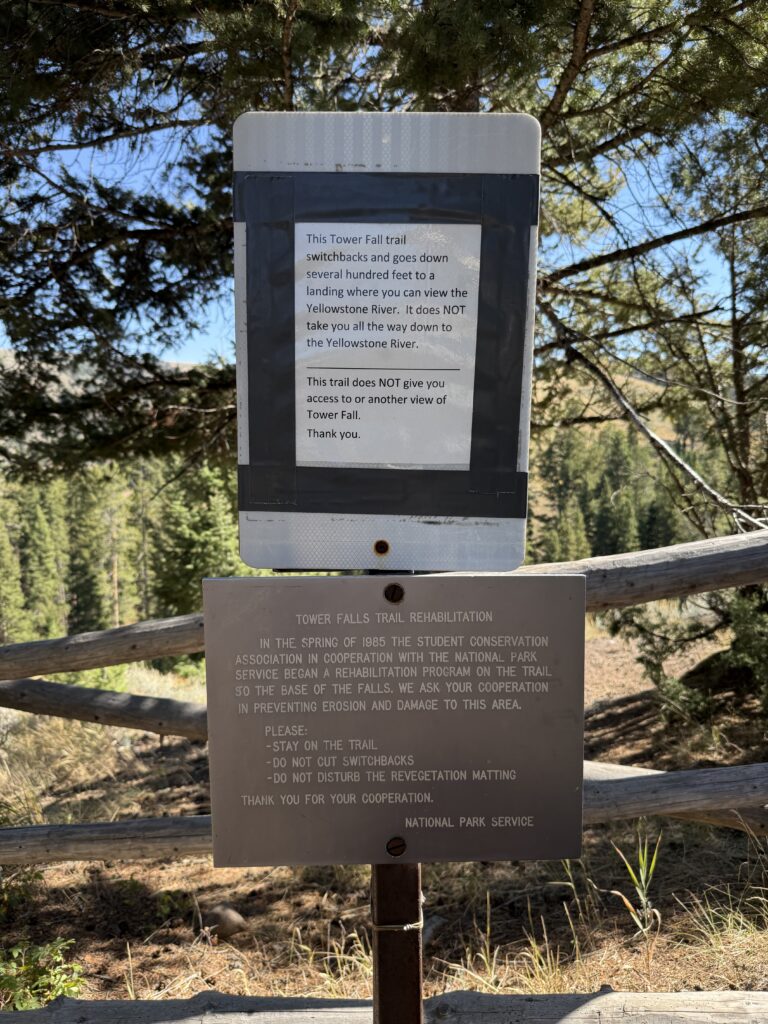
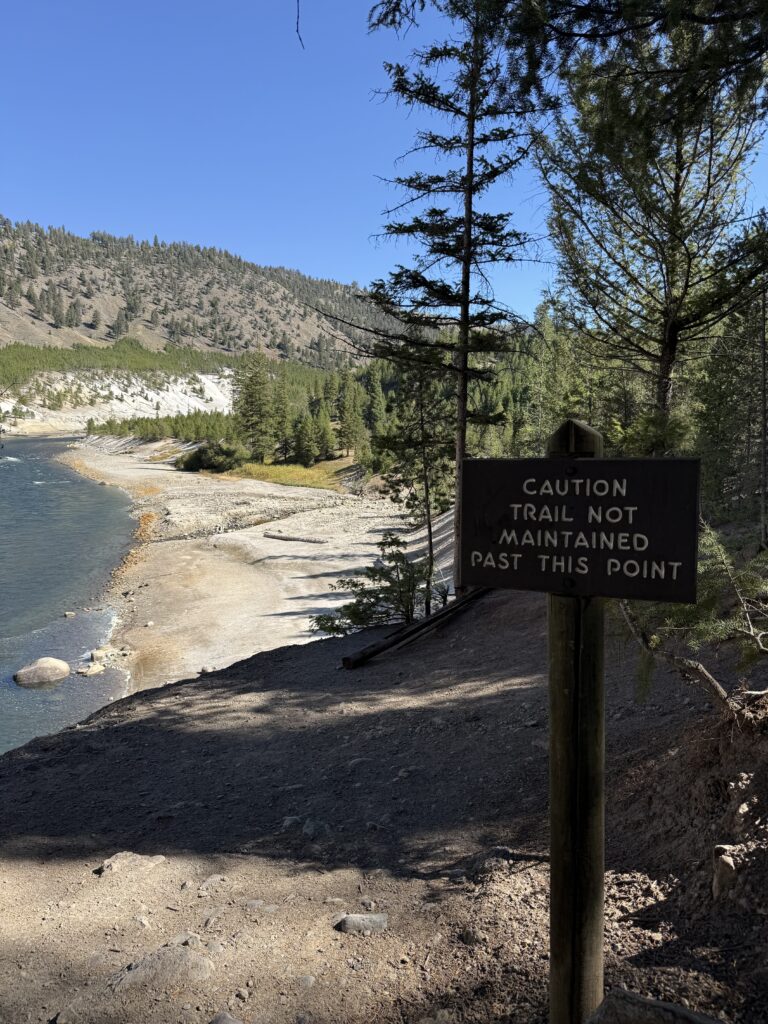


(6) – Mt Washburn
For those seeking panoramic views, Mt Washburn is an excellent option. While we didn’t do the full 5-mile hike to the fire lookout tower due to heightened bear activity during the fall, the views from the parking lot are still spectacular. If you’re visiting in summer, the hike is a great option for those who want a challenge and some of the best views in the park. It’s recommended to take precautions if hiking in bear country, especially during the fall when bear activity is higher.
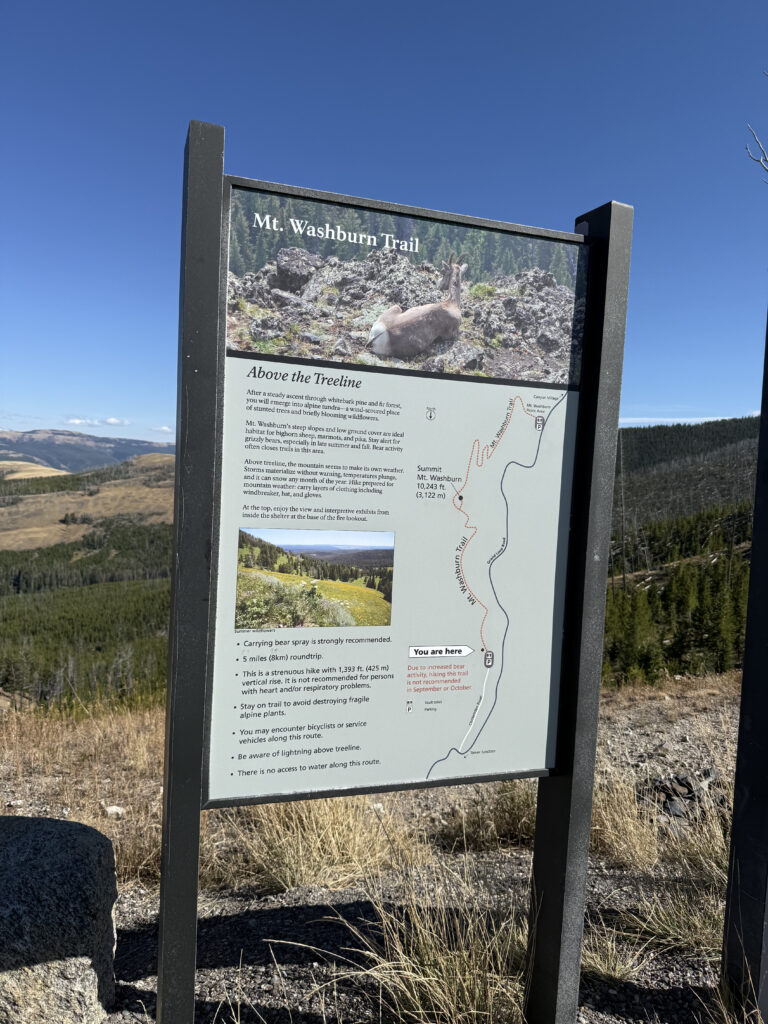
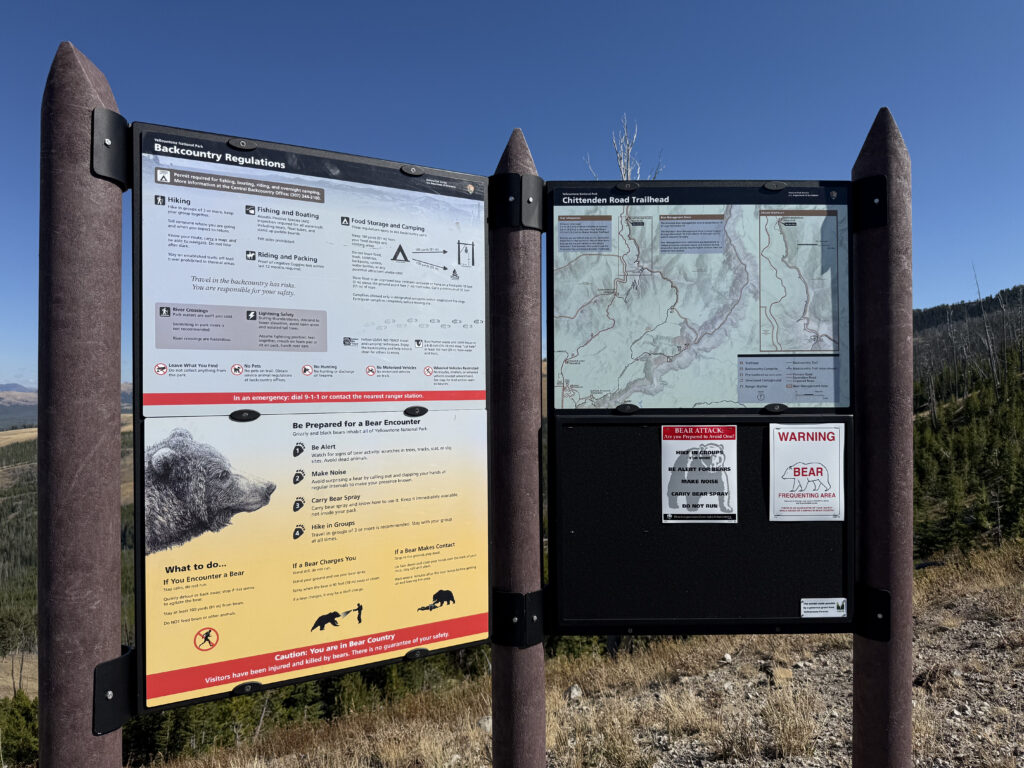
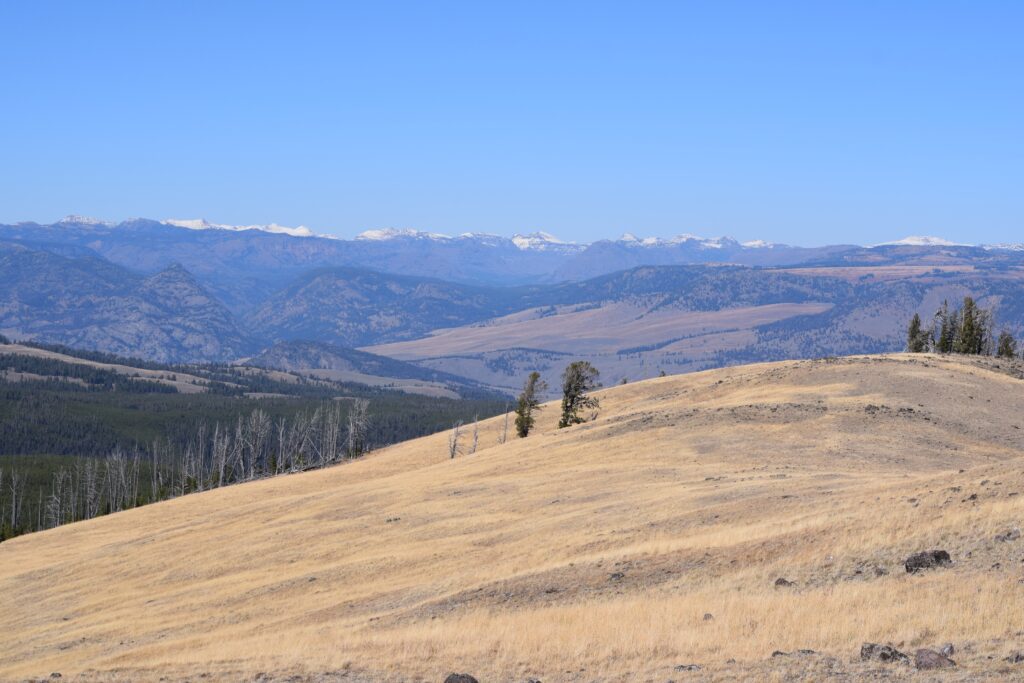
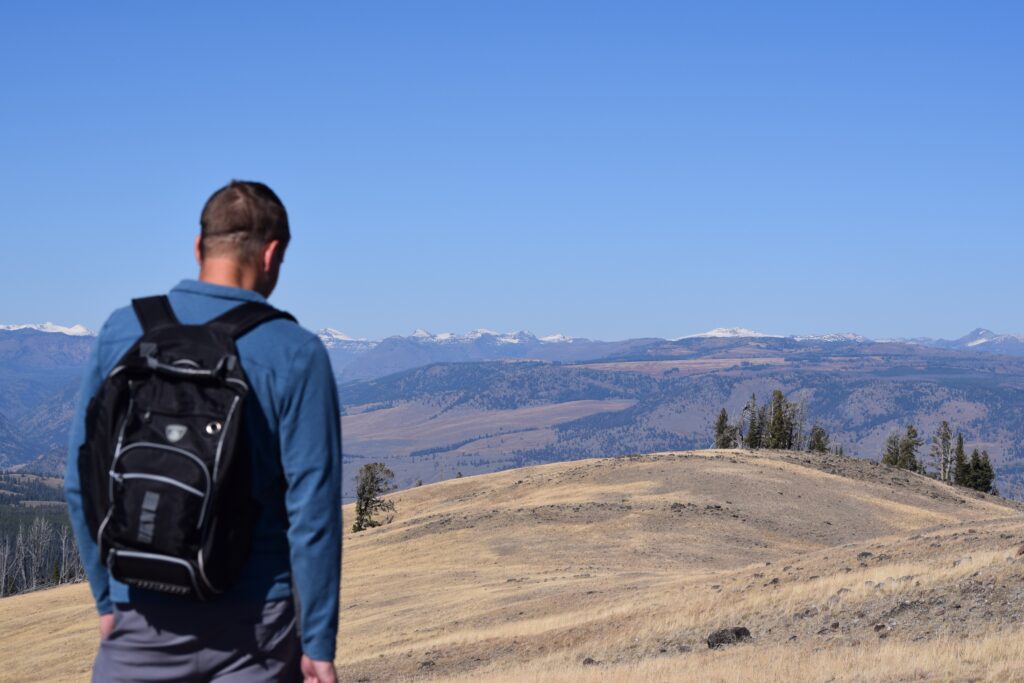

(7) – Grand Canyon of Yellowstone
Prepare for one of the most iconic sights in the park: the Grand Canyon of Yellowstone. The canyon’s dramatic cliffs, vibrant colors, and the roar of the Lower Falls will leave you in awe. The best way to explore the canyon is by driving along the North Rim Drive, where you’ll find several viewpoints. Below are a few stops you shouldn’t miss!

Brink of Lower Falls: A steep but short 0.8-mile round-trip hike will take you to the viewpoint for a close-up view of the spectacular Lower Falls. This hike is challenging but absolutely worth the effort, as you’ll get a unique perspective of the falls and canyon.


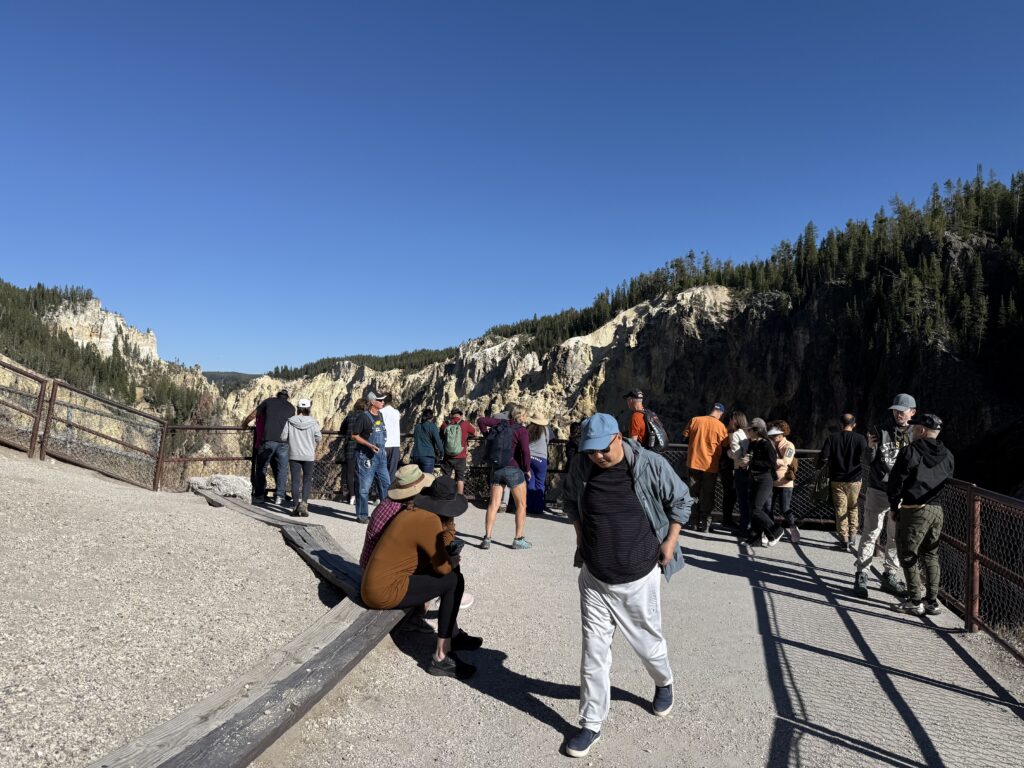
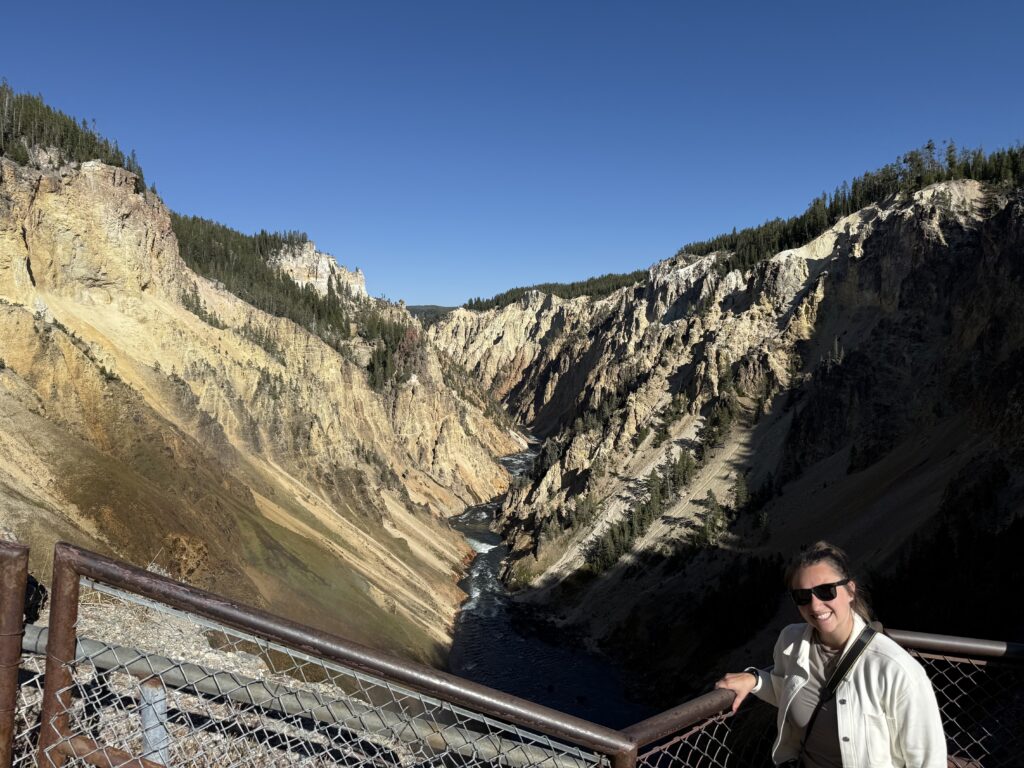

Lookout Point: Located along the South Rim Drive, this viewpoint offers a stunning aerial view of the Lower Falls and the Yellowstone River as it cuts through the canyon. It’s an easy stop for a photo opportunity.

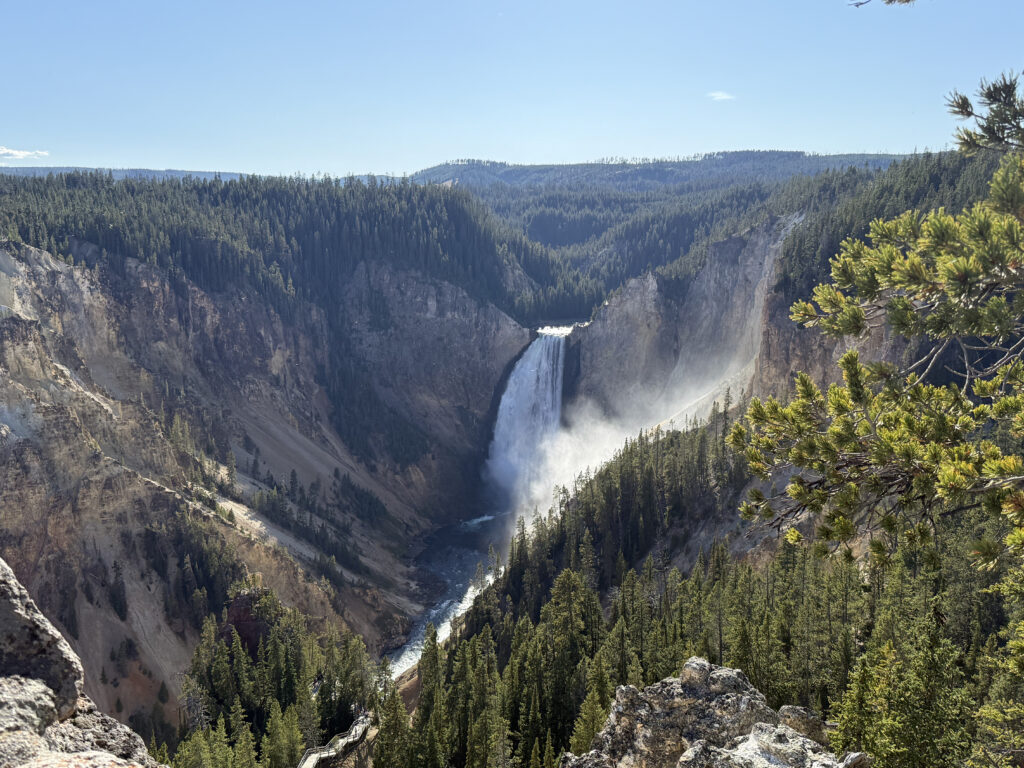
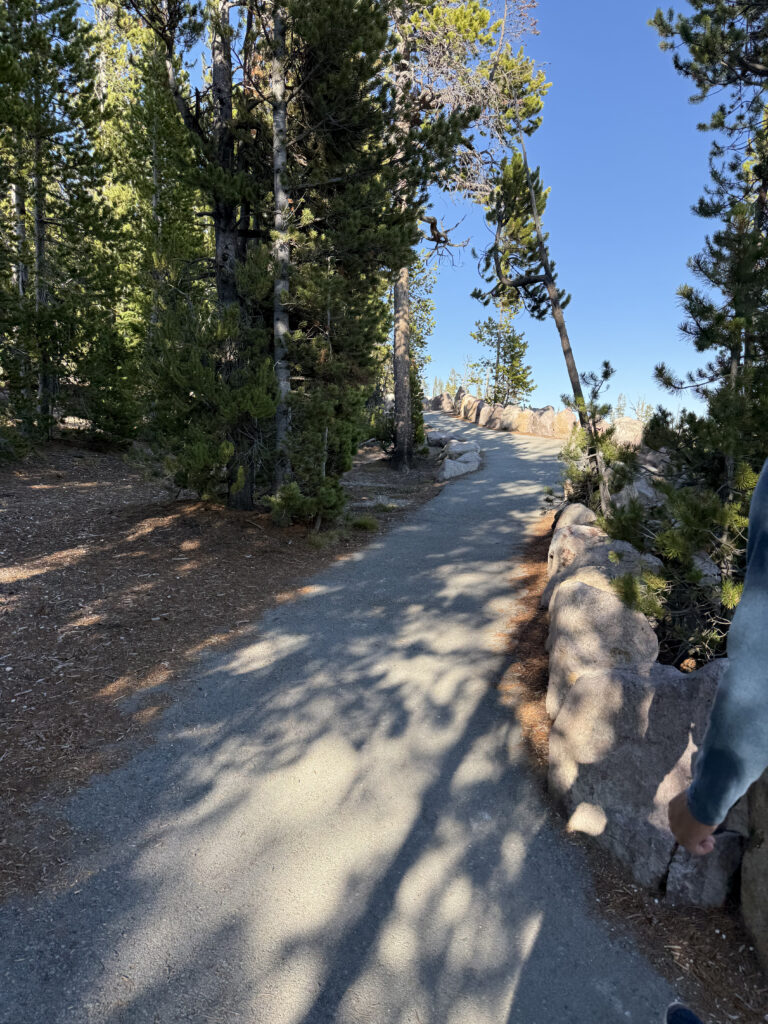
Inspiration Point: Another excellent viewpoint that provides a breathtaking view of the canyon, and it’s easily accessible from the road.

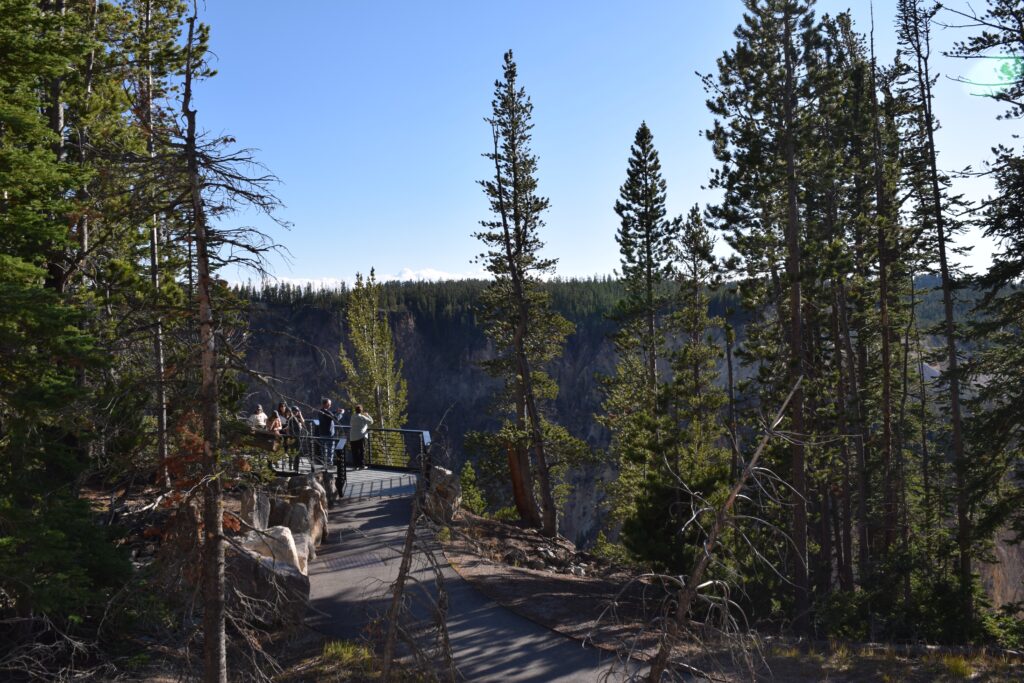
(8) – Norris Geyser Basin
Next, head toward Norris Geyser Basin, one of Yellowstone’s hottest and most dynamic geothermal areas. Here, you can explore two distinct loops:
- Porcelain Basin Trail: This short 0.6-mile loop is an easy walk on boardwalks around geysers, hot springs, and fumaroles. The otherworldly landscape is an incredible sight, and you’ll see plenty of steam rising from the ground.
- Back Basin Trail: If you’re up for a longer hike, this 1.6-mile trail leads you to Steamboat Geyser, one of the world’s most powerful geysers. However, the geyser historically only erupts a handful of times each year. The trail also leads past Porkchop Geyser (which hasn’t erupted since 1989) and other hydrothermal features too.
If you’re in a time crunch, choose Porcelain Trail over Back Basin Trail.
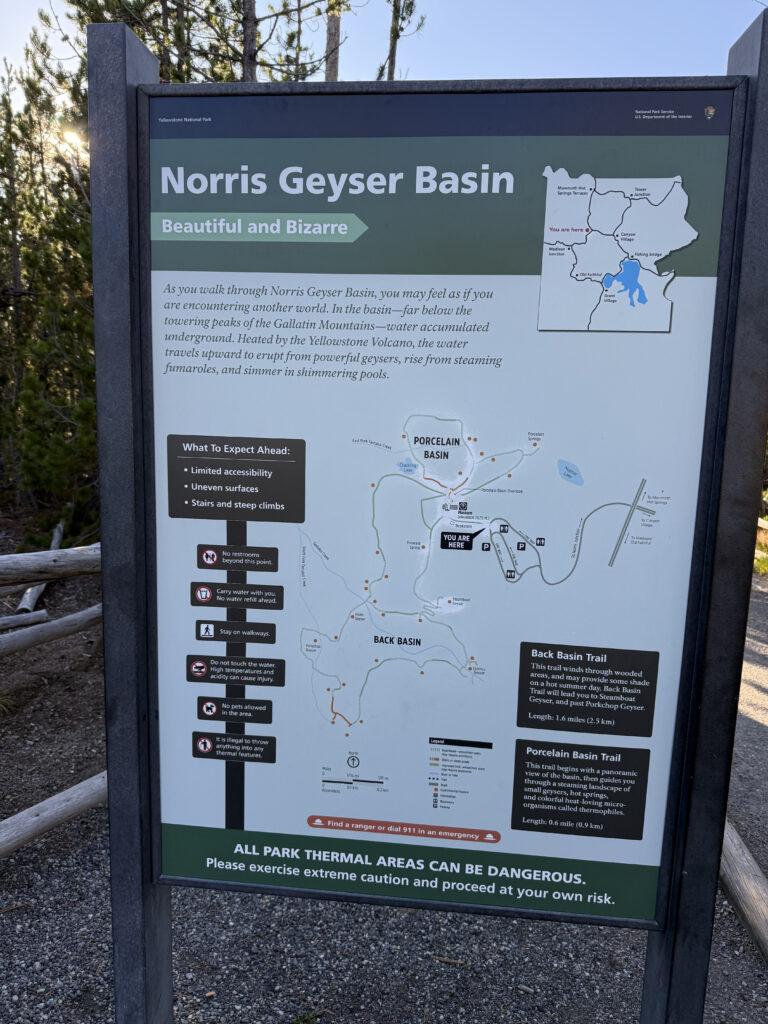
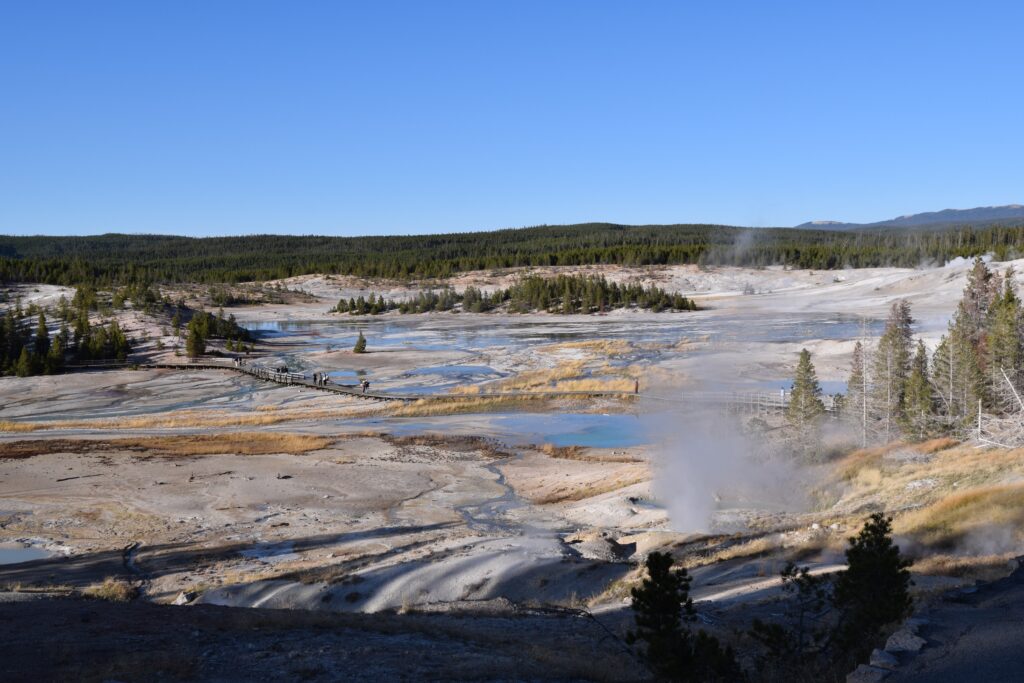
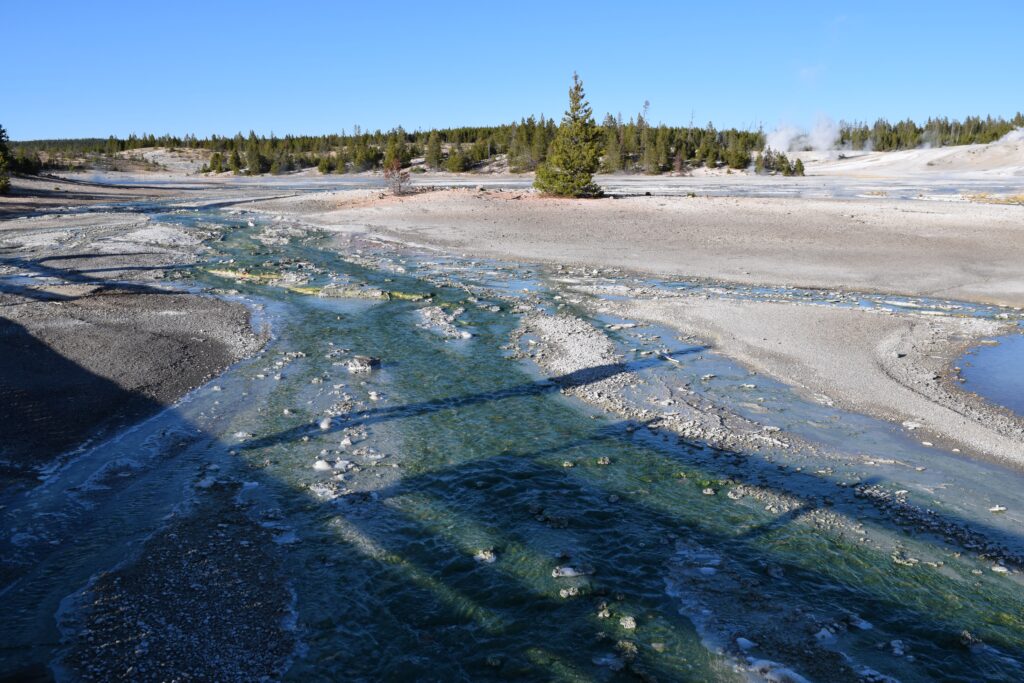

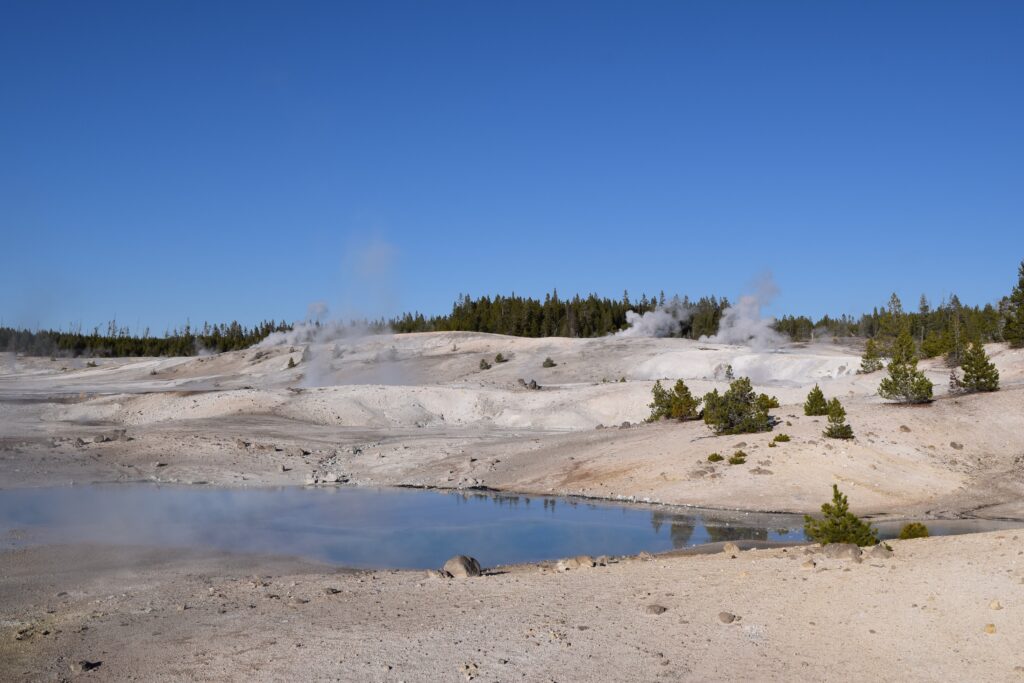
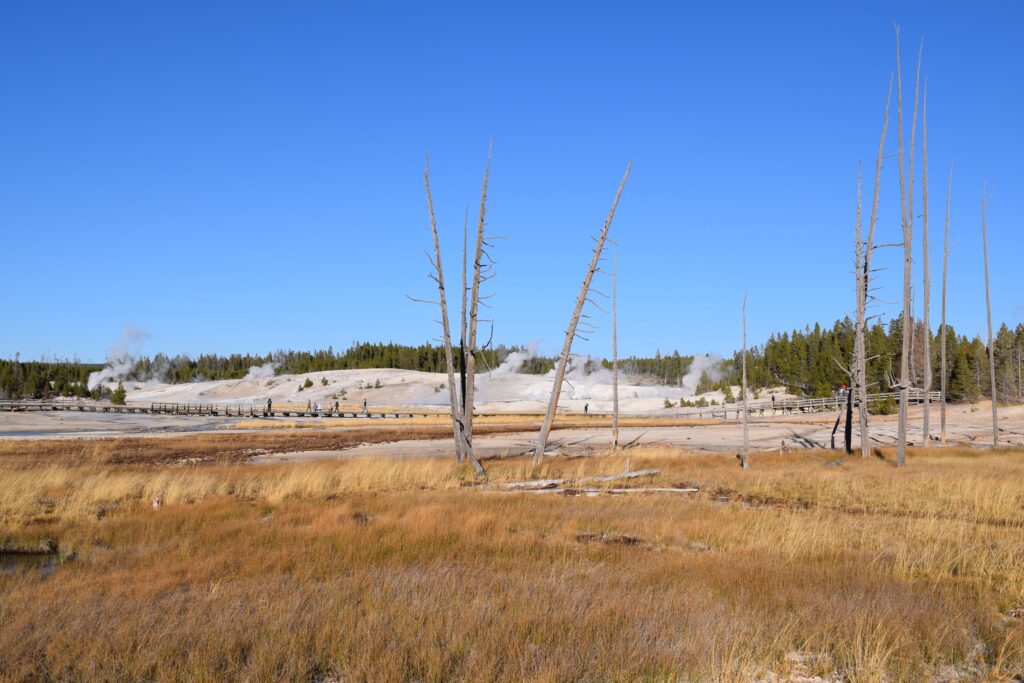
(9) – Beryl Spring
For another quick geothermal stop, swing by Beryl Spring, located just off Highway 89. It’s one of the hottest springs in the park, with water temperatures ranging from 188 to 192°F. While there’s not much to do here other than take in the view, the vivid colors and steam make it an interesting stop.
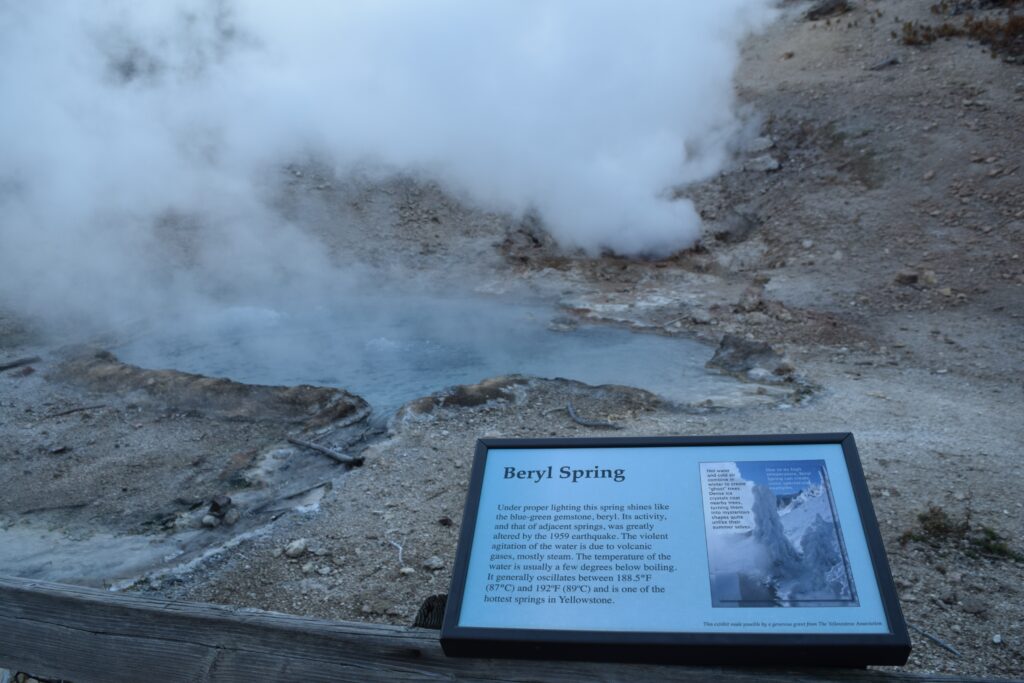
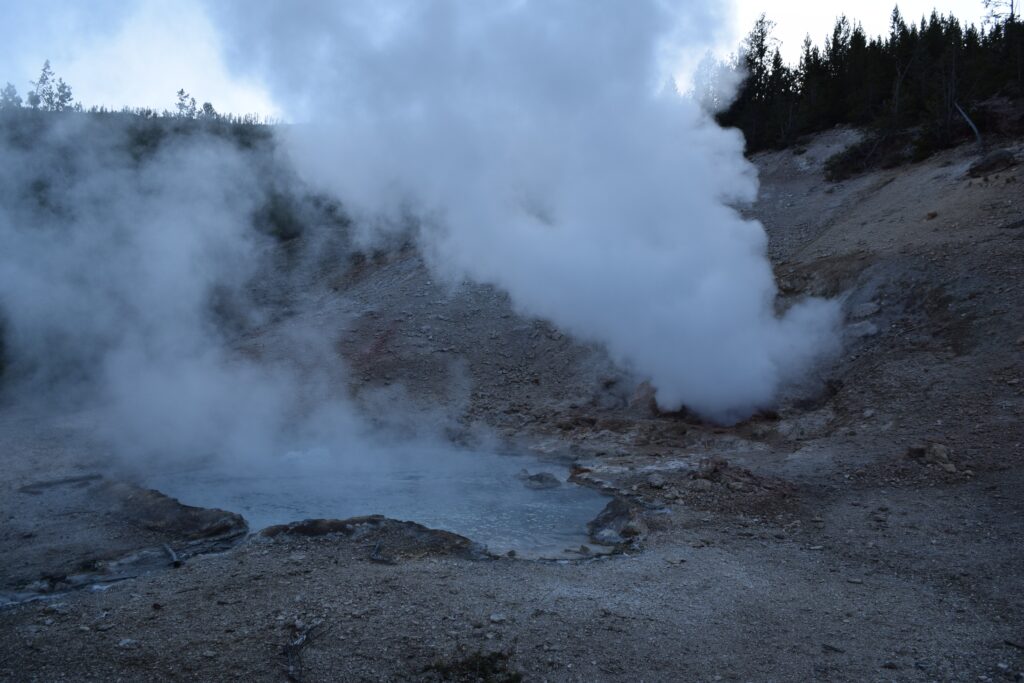
(10) – Lower Geyser Basin (Fountain Paint Pot)
Another highlight is the Lower Geyser Basin and Fountain Paint Pot area, where you’ll find a short 0.5-mile loop trail that leads you past hot springs, bubbling mud pots, and geysers. This is an easy, mostly wheelchair-accessible trail, and it’s fascinating to watch the mud pots and hot springs change in shape and color.

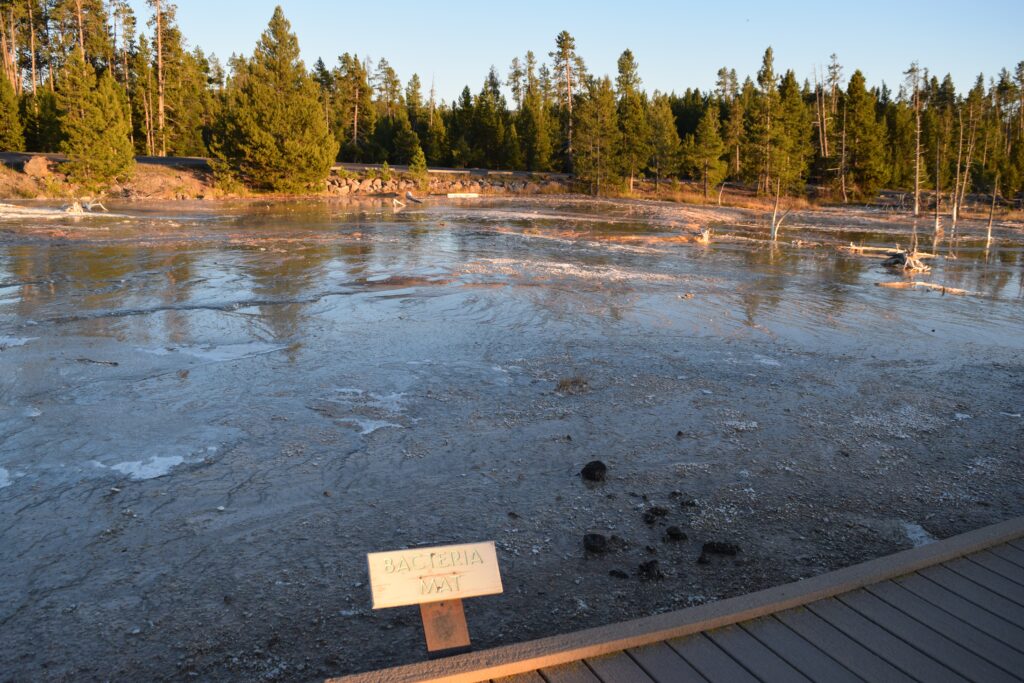
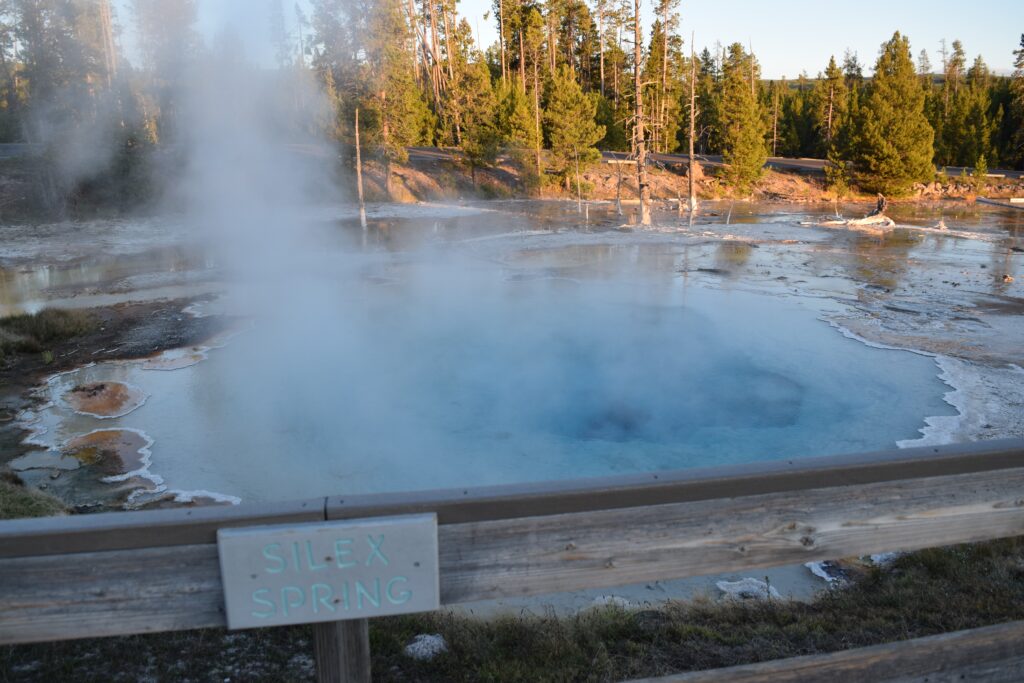
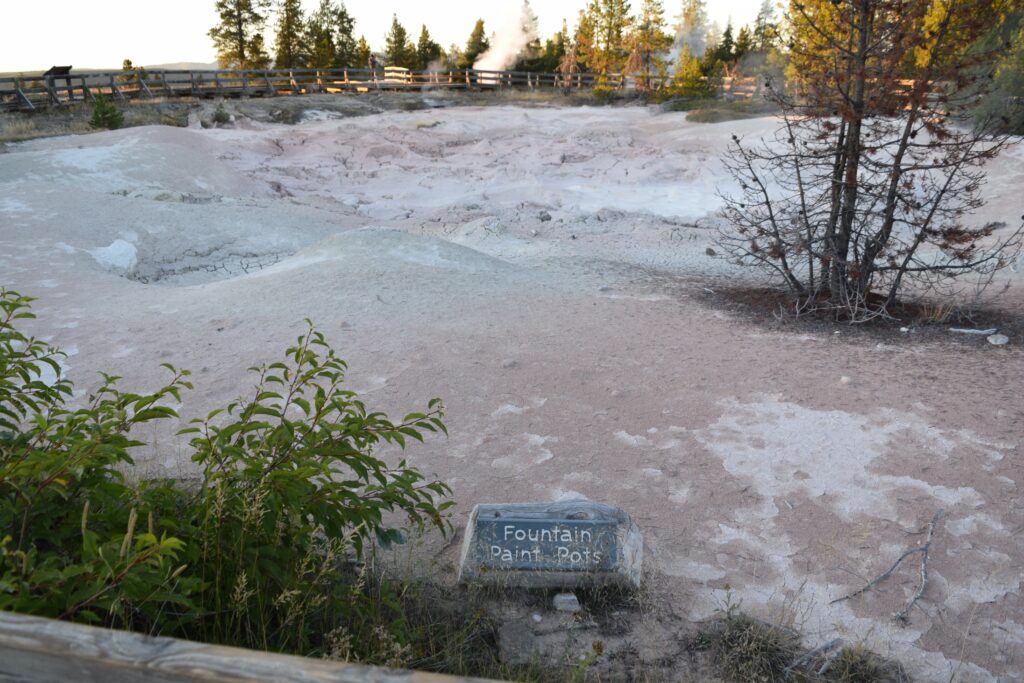
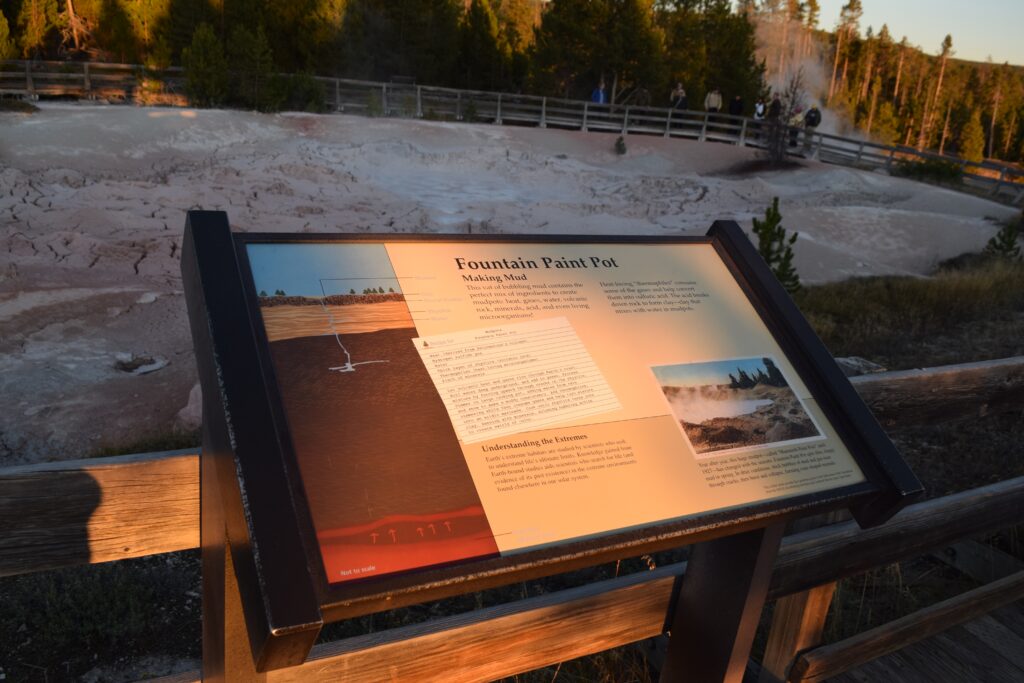
(11) – Midway Geyser Basin (Grand Prismatic)
One of the most famous sights in Yellowstone is Grand Prismatic Spring, located in the Midway Geyser Basin. This hot spring is the largest in the park and is known for its vibrant, rainbow-colored waters. The 0.5-mile boardwalk loop will give you a close-up view of the spring and other nearby features like Excelsior Geyser and Opal Pool. The colors here are absolutely stunning, so be sure to bring your camera!
Note: It was foggy when we were here, so my pictures aren’t the best. I definitely recommend this stop though!
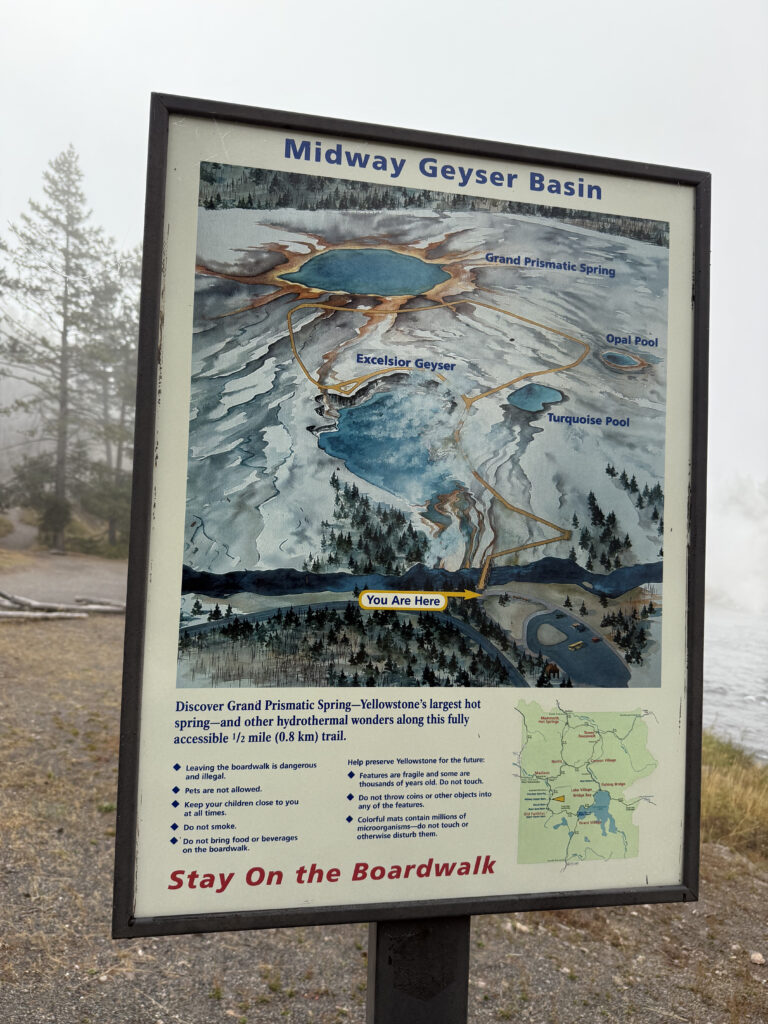
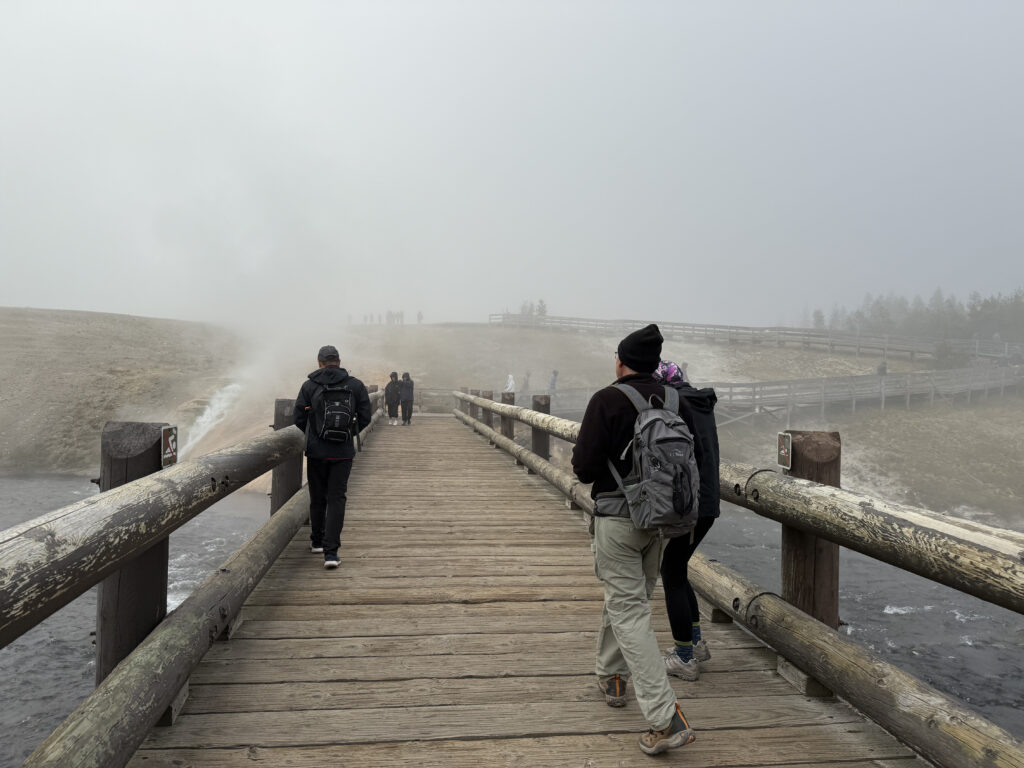
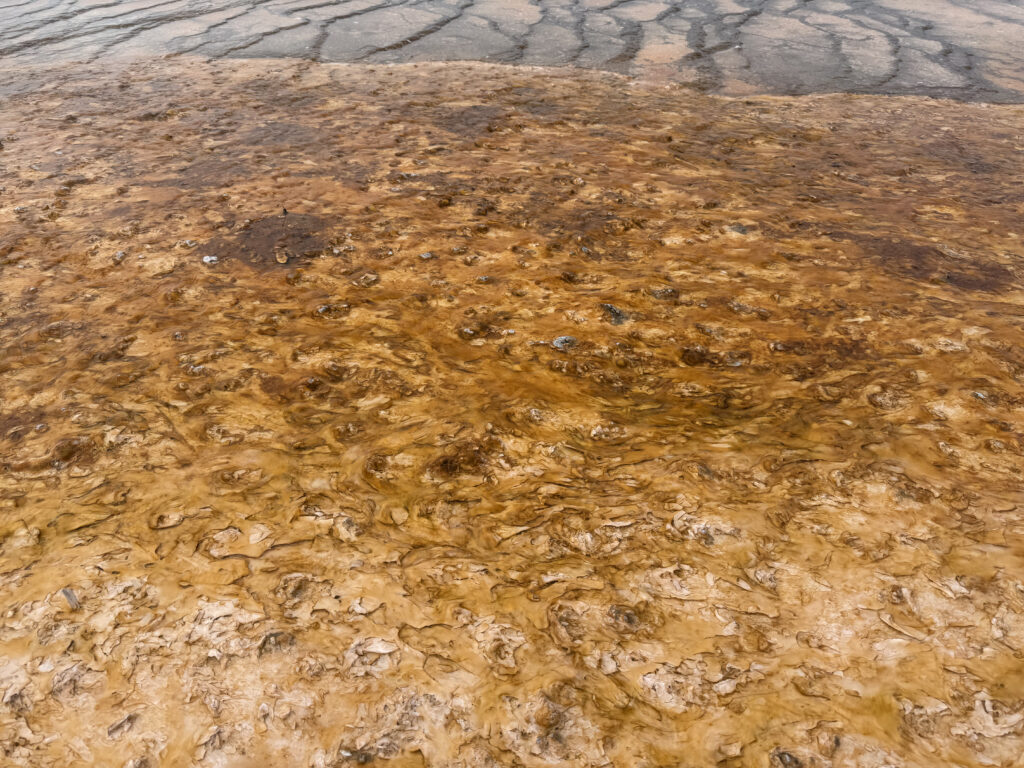
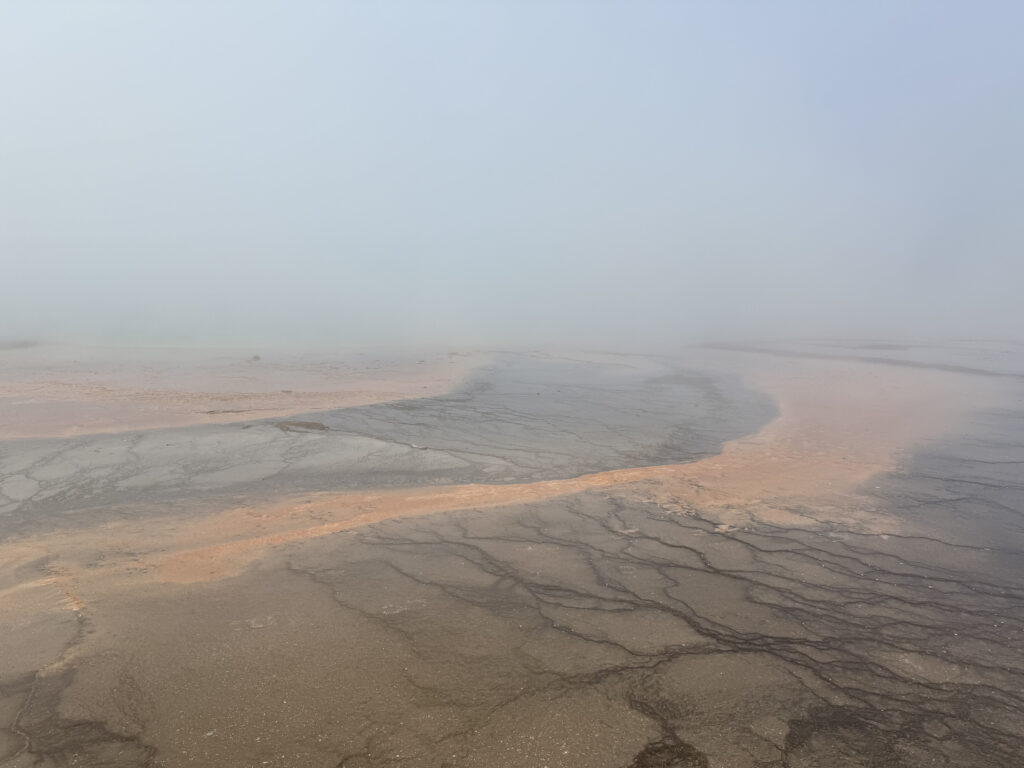
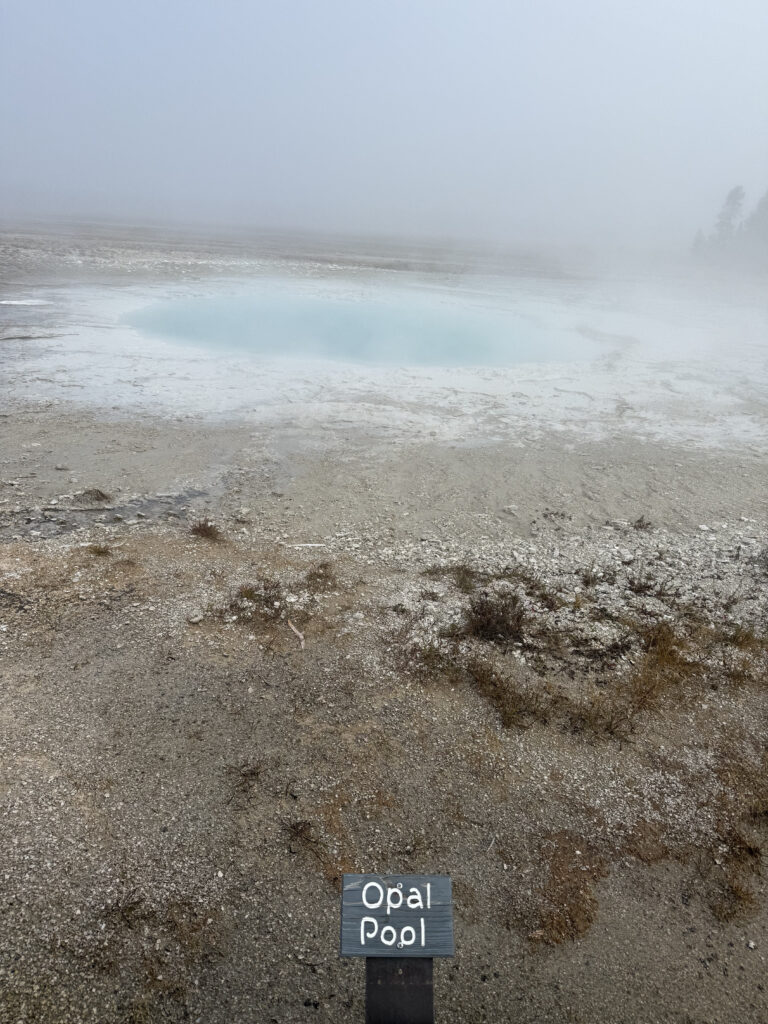
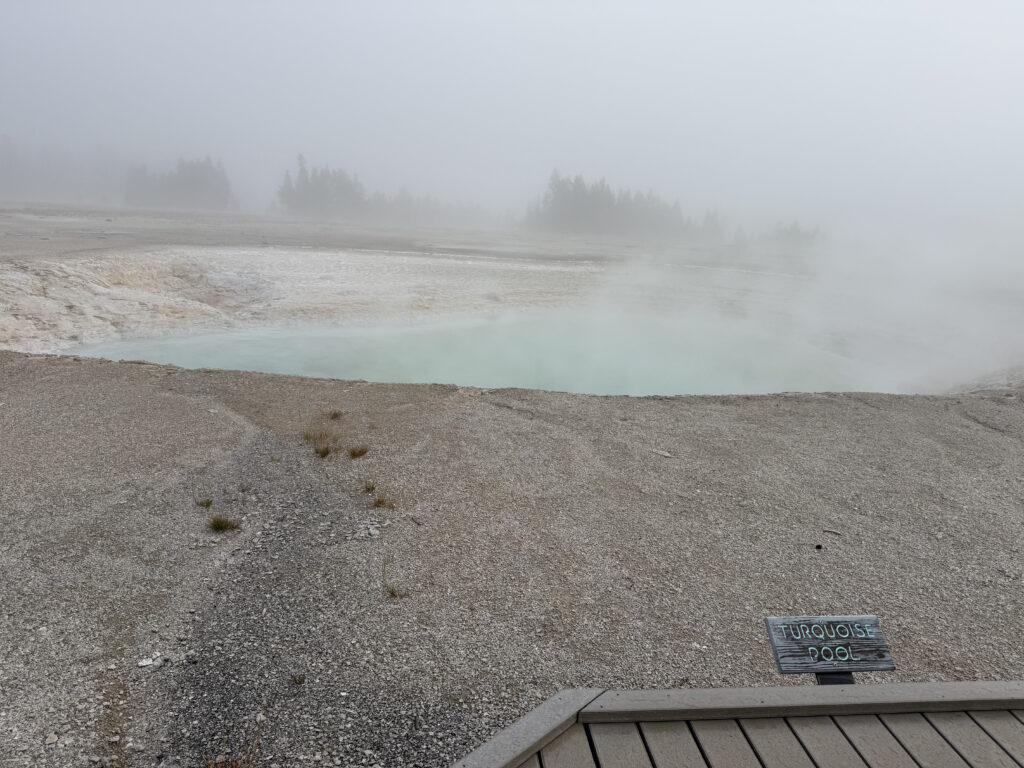
(12) – Upper Geyser Basin (Old Faithful)
Conclude your day with a visit to Old Faithful, perhaps the most famous geyser in the world. Known for its predictable eruptions, Old Faithful shoots hot water up to 180 feet into the air every 45 to 90 minutes. After you witness the eruption, you can explore the surrounding area and take a walk on the various trails in the Upper Geyser Basin. You’ll also find other impressive geysers like Grand Geyser, Castle Geyser, and Daisy Geyser.



(13) – Sheffield’s Restaurant
After a busy day of adventure, we went to Sheffield’s Restaurant for dinner. Honestly, this was the only option in the area open because we were eating around 8-9pm. However, we were pretty satisfied with our meal. I ordered buffalo chicken mac n cheese and my husband ordered a burger. Was it the best? No. But it also wasn’t a bad meal by any means. The menu is on the pricier side, but that’s what you pay for convenience of dining in such a remote and convenient location.


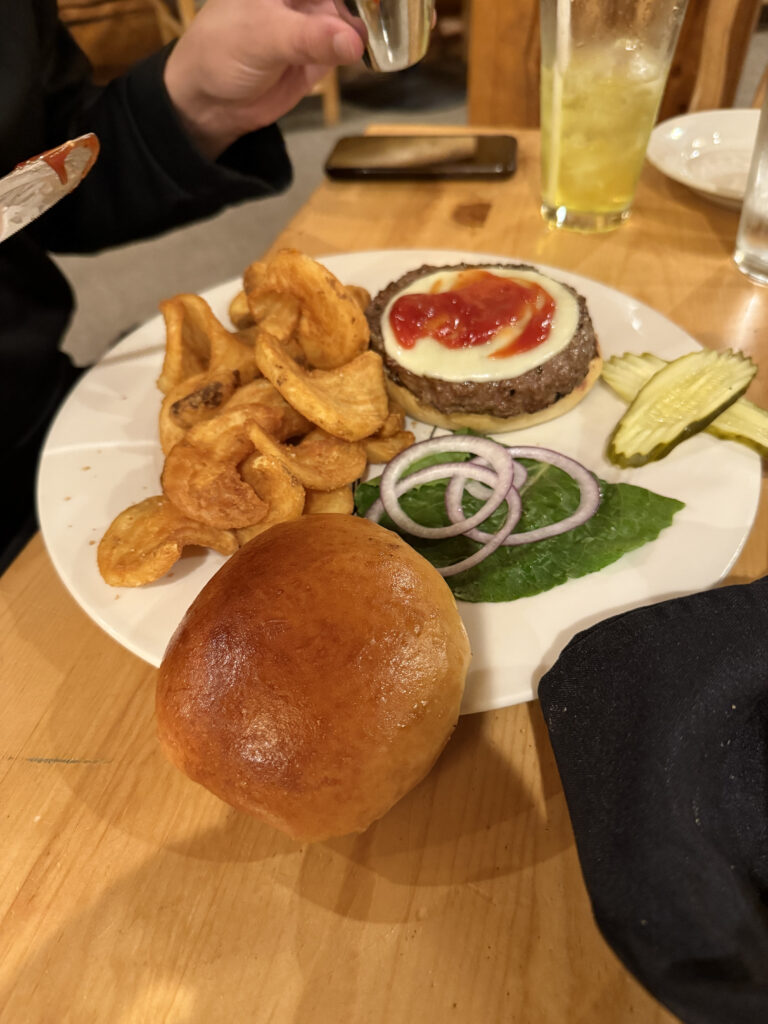
(14) – Lake Lewis Campground
We spent the night at Lewis Lake Campground, about 40 minutes south of Old Faithful, which provided a quiet and peaceful atmosphere. Our campsite (#3) had a nice spot for our tent, a fireplace with a grate, picnic table, and secure food storage to protect against attracting animals.
If you prefer a hotel, I recommend the Headwaters Lodge & Cabins at Flagg Ranch. While its amenities are pretty basic, it’s located in an extremely convenient spot between Yellowstone & Grant Teton. Click here to check out the hotel.

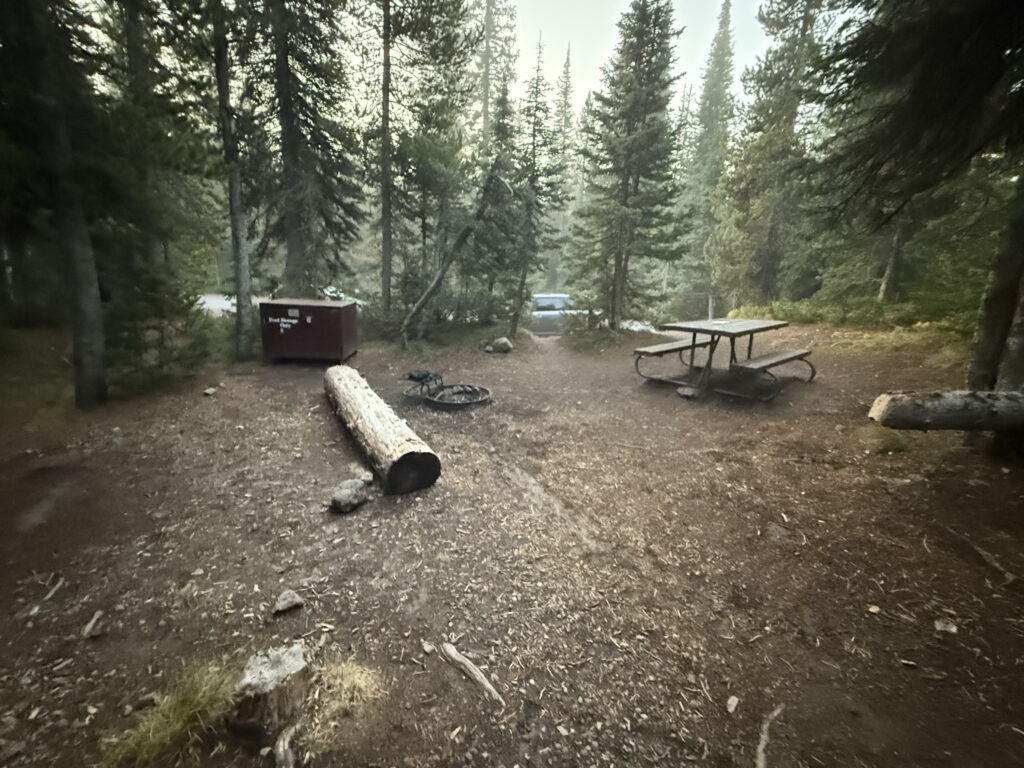
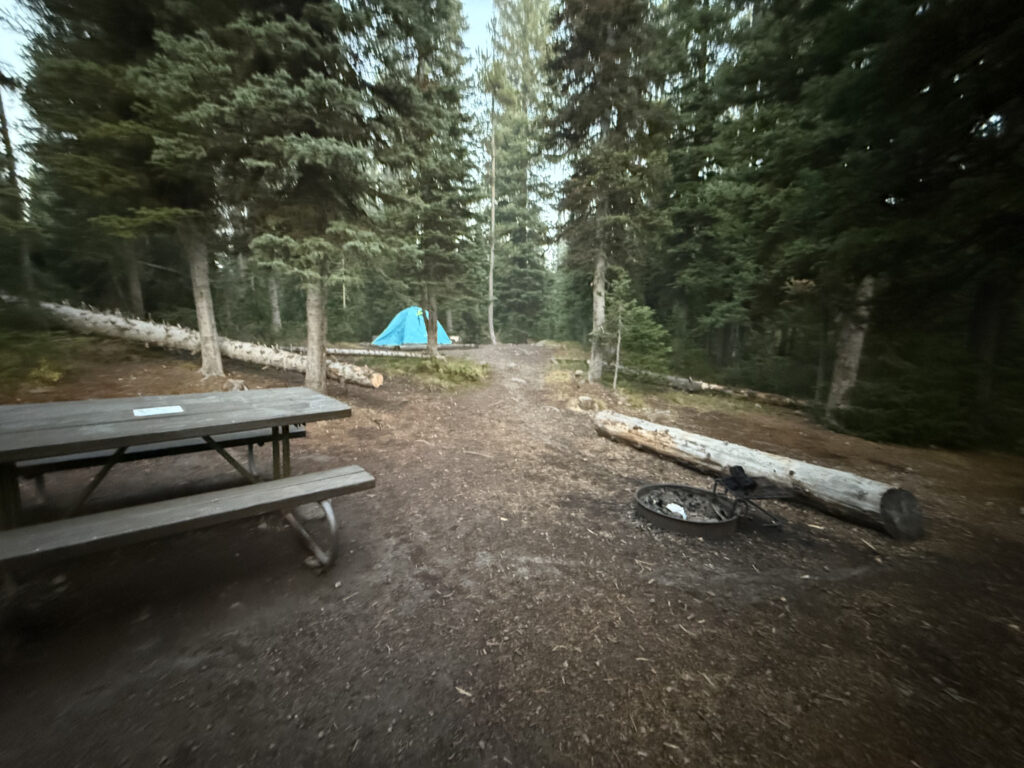
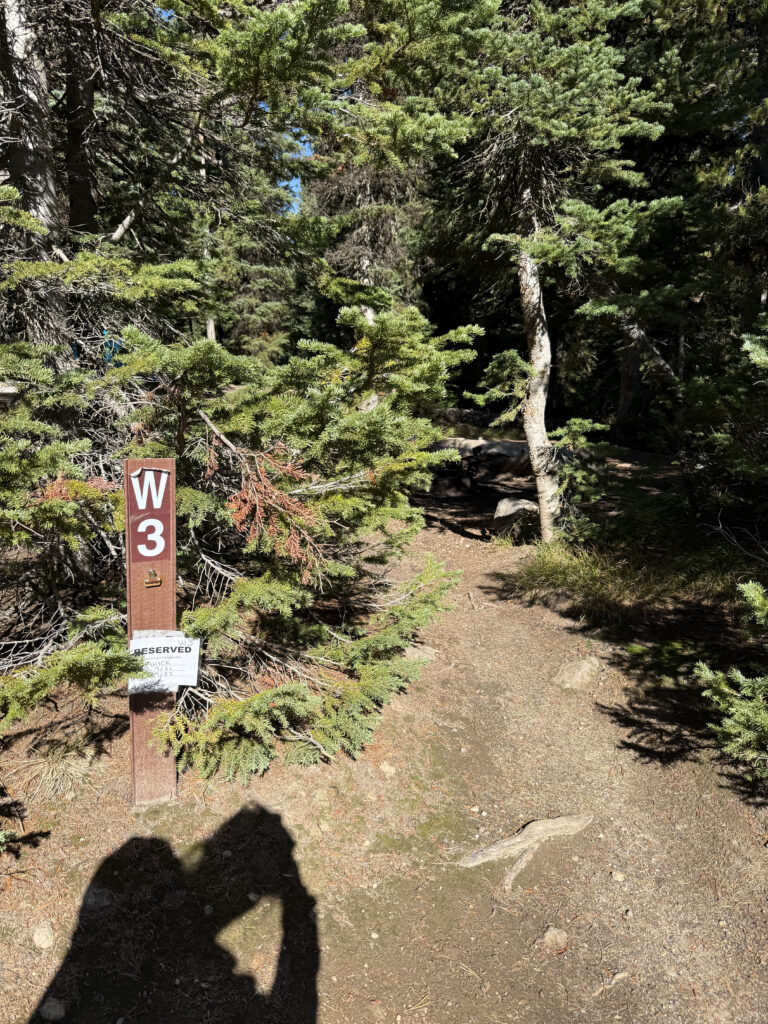

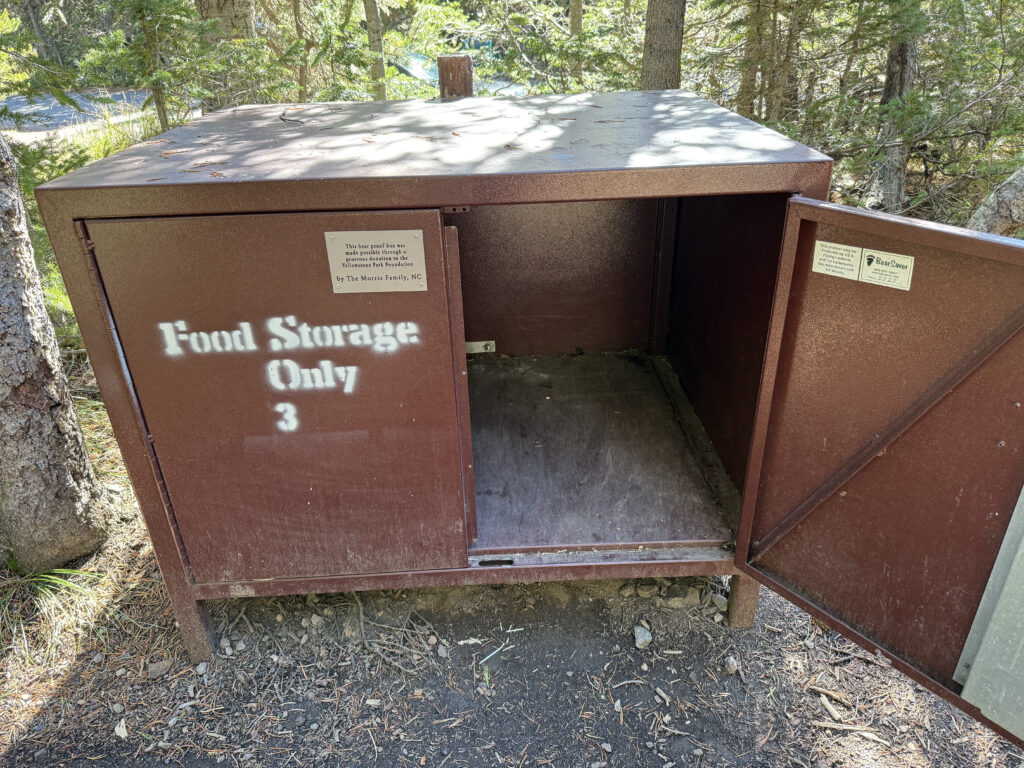
If you are looking to head to Grand Teton National Park after Yellowstone, check out my full Yellowstone & Grand Teton 5 day guide linked here!
MAP OF YELLOWSTONE NATIONAL PARK
If you are looking to head to Grand Teton National Park after Yellowstone, check out my full Yellowstone & Grand Teton 5 day guide linked here!
This blog post may contain affiliate links, which are at no cost to you. It just helps support me so I can continue to put out free content for you like this! Thank you for your support!

